SPORT CLIMBING GEAR GUIDE
There are a bazillion options out there and anything rated UIAA is going to be super good enough. These are our recommendations for if you are just starting out, don’t have anything yet, and don’t want to fall down the gear rabbit hole.
QUICKDRAWS
A quickdraw consists of two carabiners attached to each other with a sewn textile sling, often called the dogbone. Sport climbing quickdraws have a wall side carabiner dedicated to clipping bolts and a rope side carabiner dedicated to clipping the rope. The wall side carabiner can move freely on the dogbone. This helps prevent carabiner cross loading and other gear failure. The rope side carabiner is fixed to the dogbone to provide stability while clipping. Longer quickdraws can help mitigate rope drag on wander-y routes or steep routes. Quickdraw length is measured by the length of the dogbone, and not the overall length of the draw. Thicker dogbones are easier to pull on, but weigh more. Here are three of our favorite all around quickdraws for sport climbing.
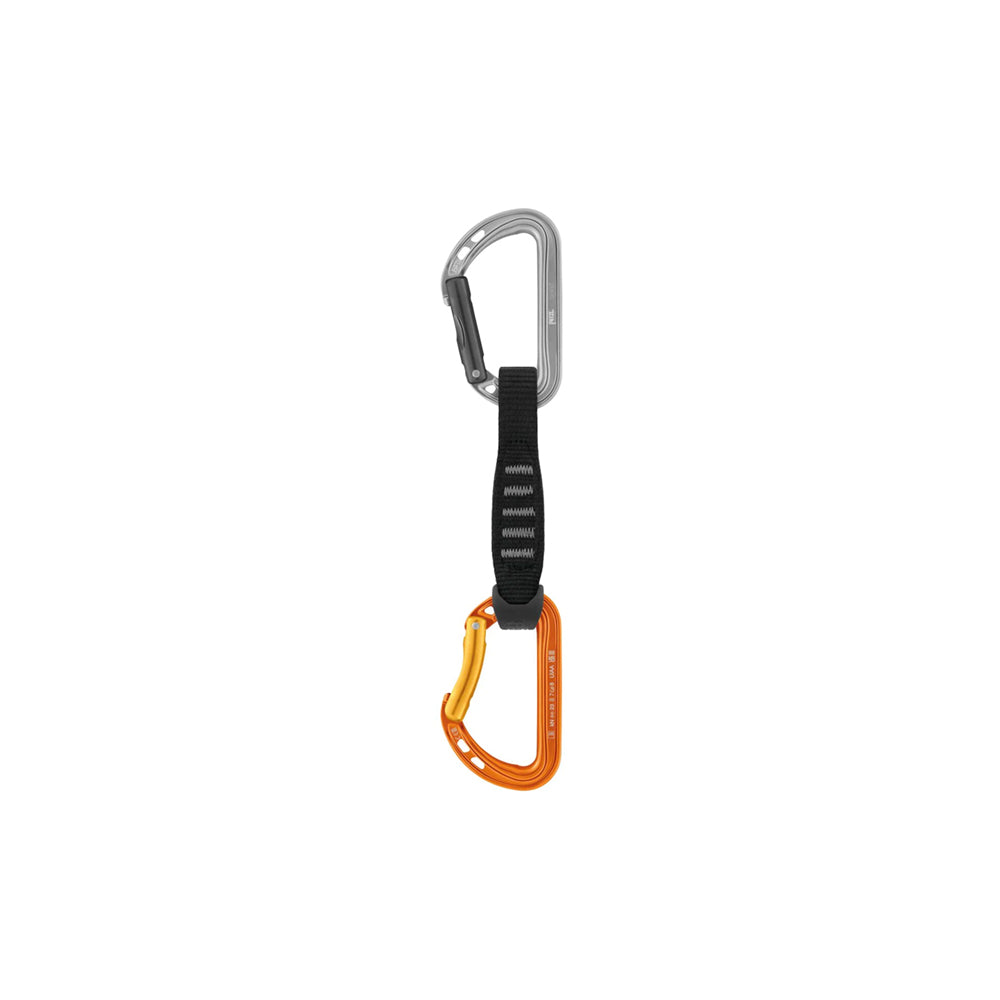


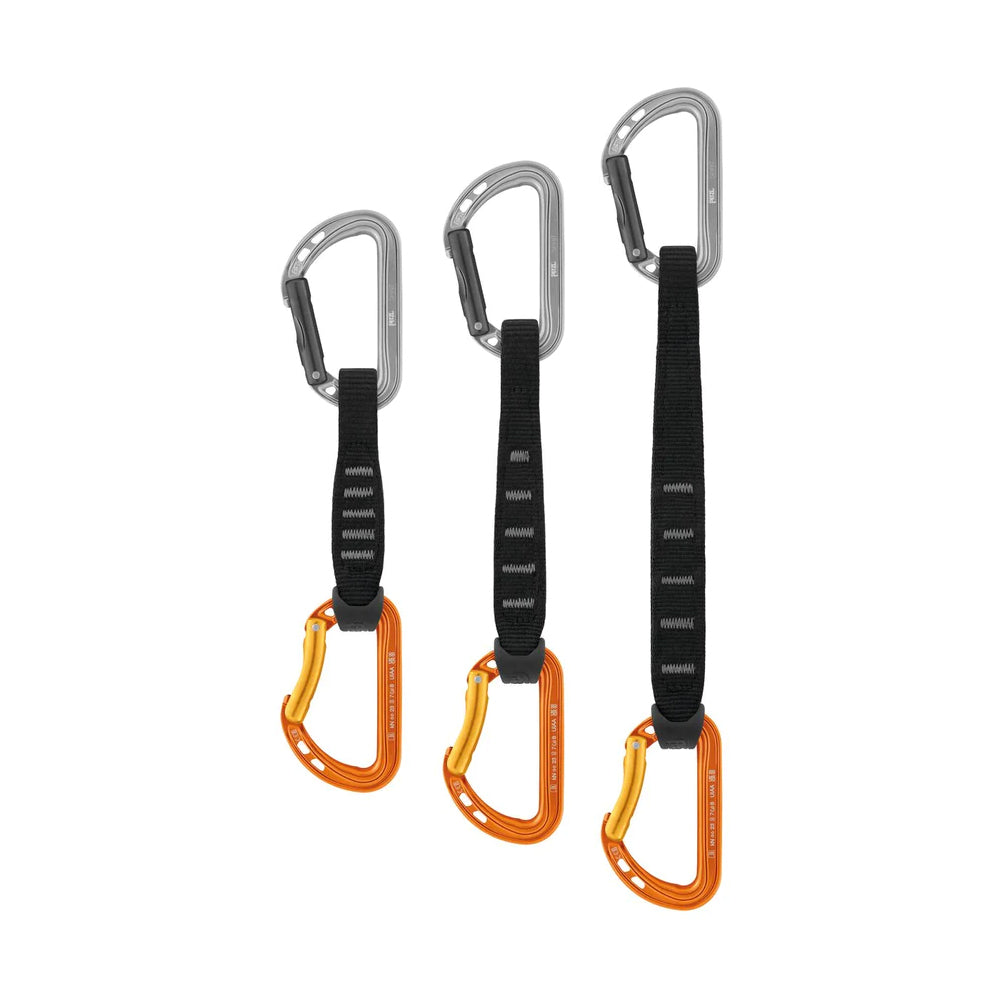
Spirit Express Quickdraw
Tier benefits:
Tier benefits:
The Petzl Spirit Express quickdraw is our favorite solid gate quickdraw. These quickdraws come in 3 lengths, 11cm, 17cm, and 25cm. The 25cm Spirit Express is the longest sport climbing quickdraw we sell, which makes it a great option for extremely steep routes. Wide dogbones make these exceptionally easy to pull on, saving you energy when projecting hard routes. The recently redesigned Spirit carabiners are extremely light for a full size solid gate carabiner while still being very comfortable to clip. They are certainly not the cheapest quickdraw, but we think their higher price is wholly justified and are a true joy to climb on.
Pros
- Great length options. Curved gates for easy clipping. Thick dogbones make pulling easy.
Cons
- Expensive. Heavier than other options.
![id=[47163753693499, 48012609388859]](http://hownot2.com/cdn/shop/files/2896.webp?v=1756773545&width=2000)
![id=[47163753726267]](http://hownot2.com/cdn/shop/files/18-CM.jpg?v=1756773545&width=1000)
![id=[47734889611579]](http://hownot2.com/cdn/shop/files/3460.webp?v=1756773545&width=2000)
![id=[49111140270395]](http://hownot2.com/cdn/shop/files/3440.webp?v=1756773545&width=2000)
Orbit Wire Express KS
Tier benefits:
Tier benefits:
The CAMP Orbit Express KS wiregate is our cheapest sport climbing quickdraw option, making them fantastic for newer climbers. A 6-pack of 11cm quickdraws is only $89.95, a full ten dollars cheaper than Black Diamond’s equivalent offering. While slightly thinner dogbones and marginally smaller gate clearance make these slightly less comfortable than more expensive options, we never really noticed a significant difference. If anything, the rubber stopper on the rope side of these quickdraws does a better job than many other brands.
Pros
- Inexpensive. Rubber stoppers hold bottom carabiner very stable.
Cons
- Smaller gate clearance and thinner dogbones.
![id=[46405667815739]](http://hownot2.com/cdn/shop/files/9441_source_1684043074.webp?v=1756773686&width=1000)
![id=[46405667881275]](http://hownot2.com/cdn/shop/files/8778_source_1691109565.webp?v=1756773686&width=1000)
![id=[46405667914043]](http://hownot2.com/cdn/shop/files/hot_2Bforge_2Bhybrid_2Bpink_720x_0e8b6ea6-ce57-487d-944e-9d48f5ed25de.webp?v=1756773686&width=720)
![id=[46405667946811]](http://hownot2.com/cdn/shop/files/hotforge_2Bhybrid_720x_96568b99-e77c-4cfd-9daf-01fe8ac1a2e9.webp?v=1756773686&width=720)
![id=[46405667979579]](http://hownot2.com/cdn/shop/files/6556_source_1686289370.webp?v=1756773686&width=1000)
![id=[46405668012347]](http://hownot2.com/cdn/shop/files/6555_source_1686289369.webp?v=1756773686&width=1000)
HotForge Hybrid Quickdraw
Tier benefits:
Tier benefits:
The Black Diamond Hotforge Hybrid is our favorite mid-priced quickdraw. These come in 12cm and 18cm lengths, and feature a straight solid gate carabiner on the wall side and a wiregate carabiner on the rope side. This means no snagged noses when cleaning steep routes while reducing the overall weight and cost of the quickdraw. The carabiners have very deep baskets, making clipping fat ropes without catching your fingers in the gate a breeze. As an added bonus, there are two great color options letting you look cooler than everyone else at the crag.
Pros
- Huge gate clearance.
- Vibrant colors.
Cons
- Thinner dogbones make pulling slightly harder.
Ropes
We recommend buying a rope that is in the 9.5-10.0mm range. These ropes provide the best ratio between cost, durability, and handling. You can use a thinner rope, but they will likely not last as long and cost more. The length you choose is best informed by the places you climb. For many crags, 60m is plenty. In other places, 70m is becoming standard. Do some research about the places you want to climb to find out what length is best for you.
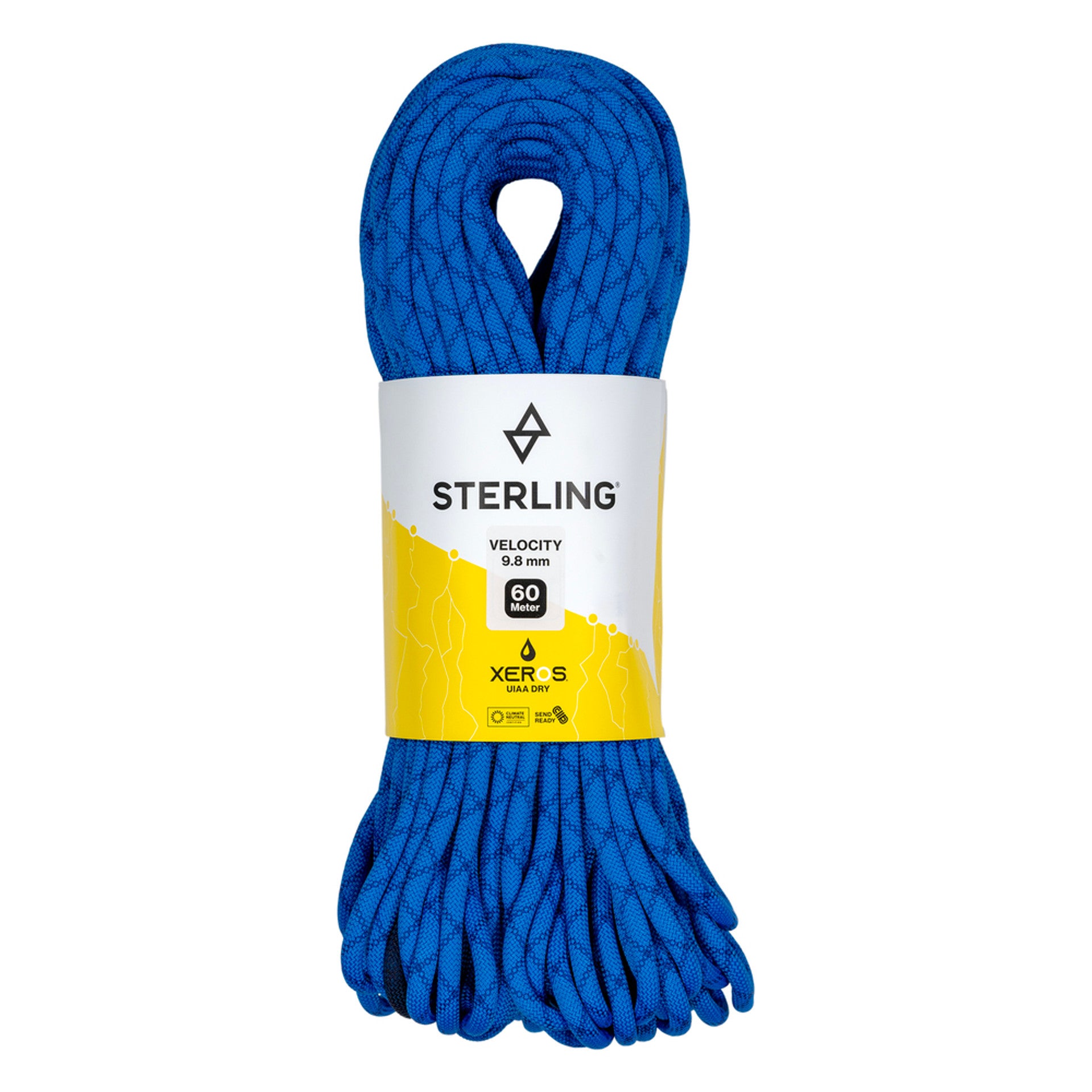
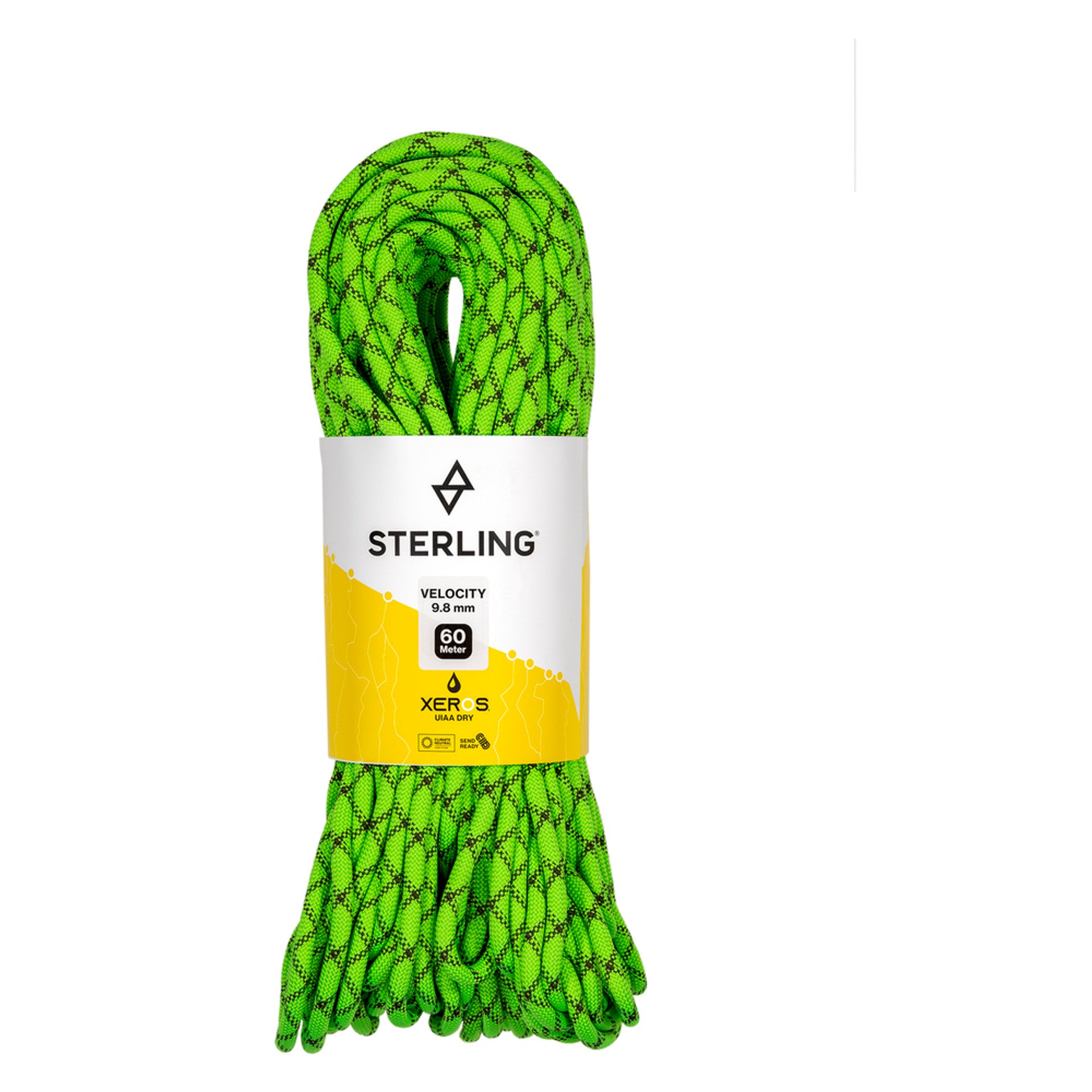
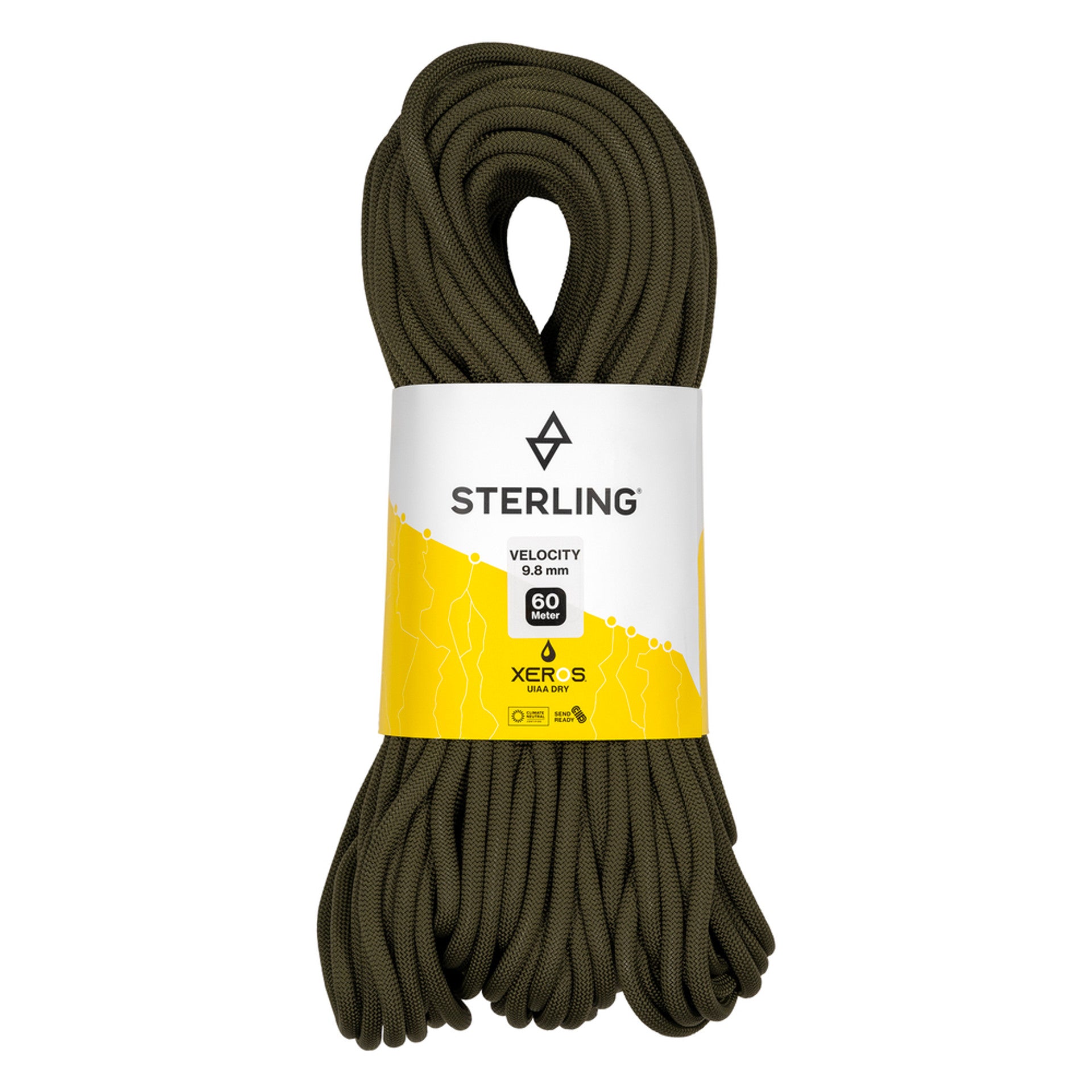
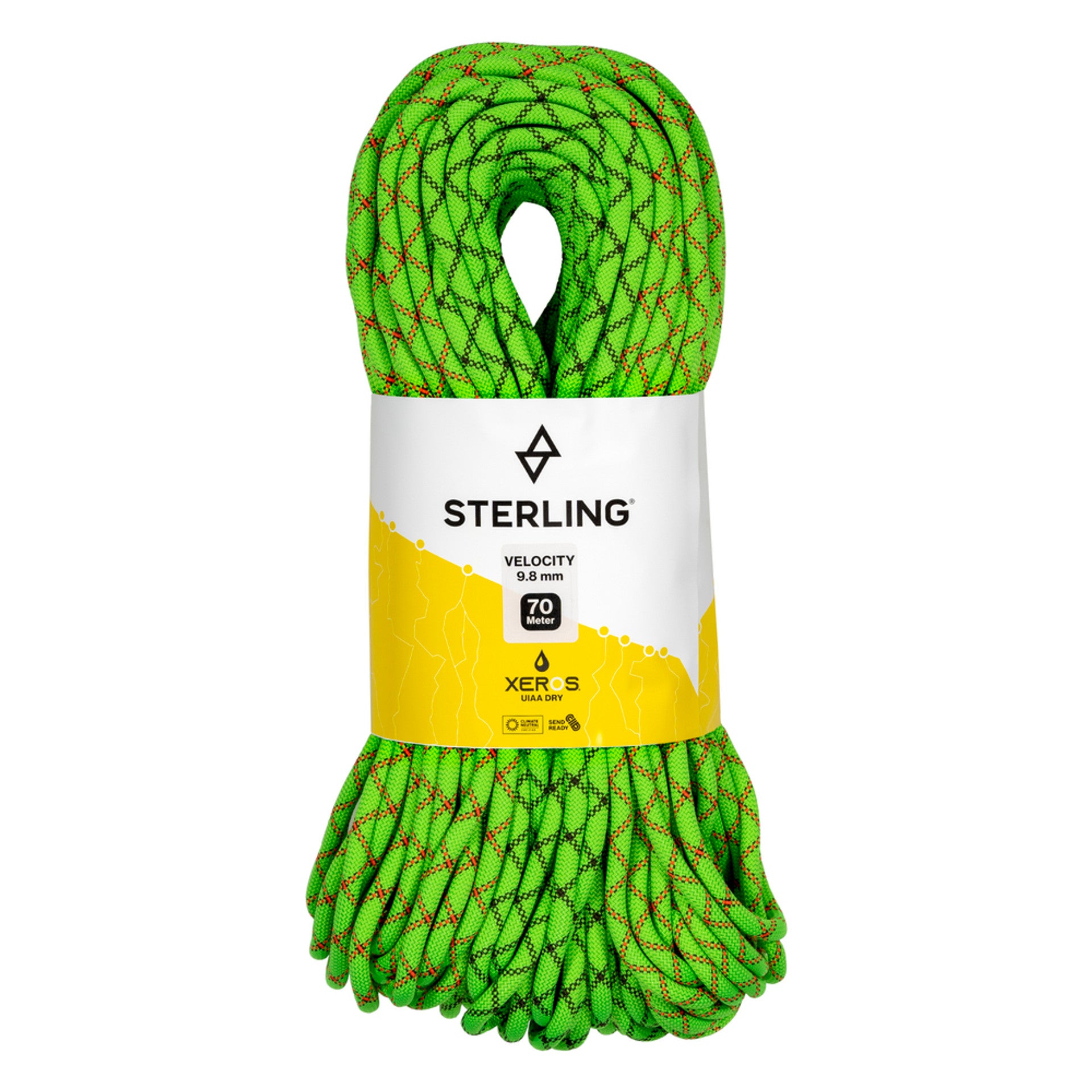
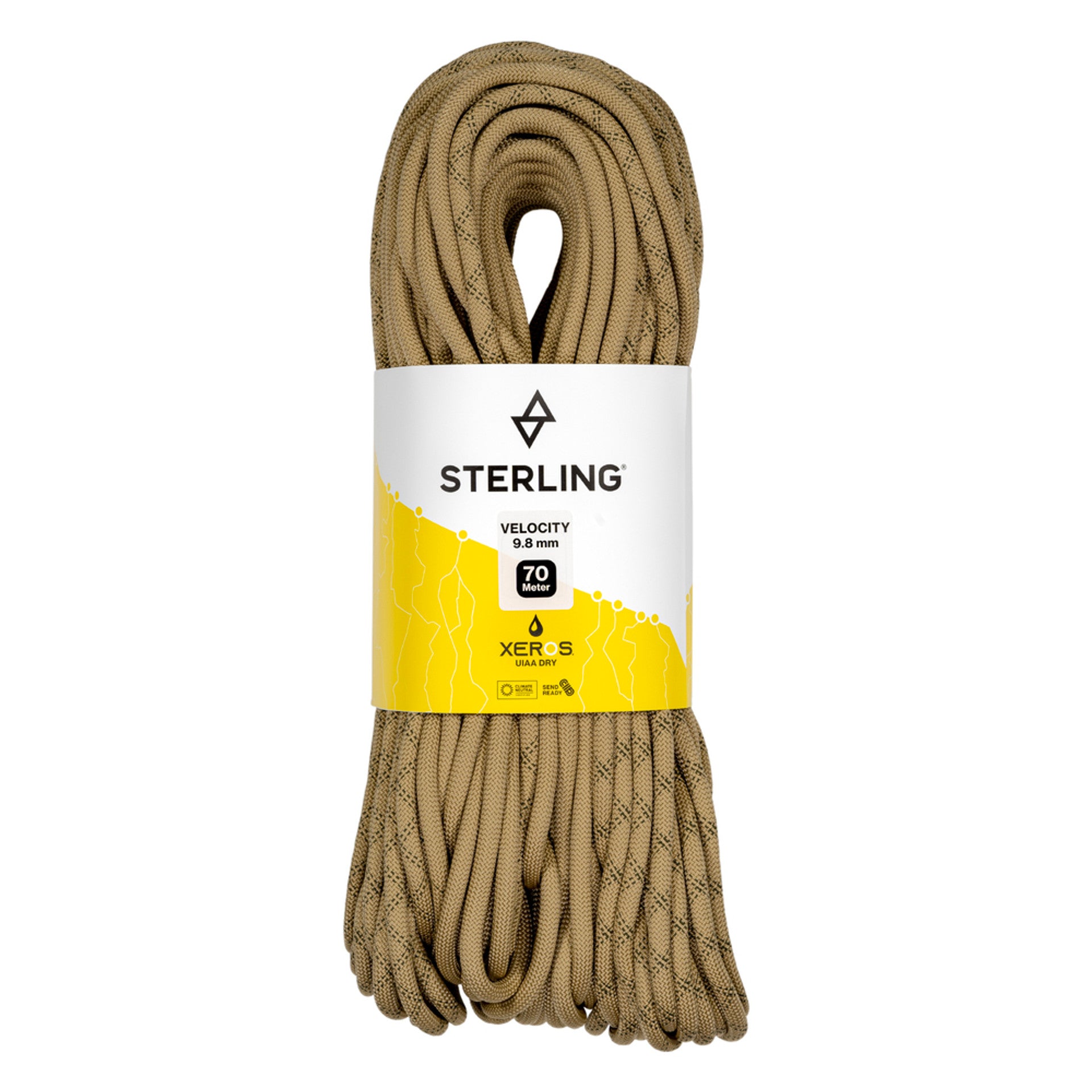
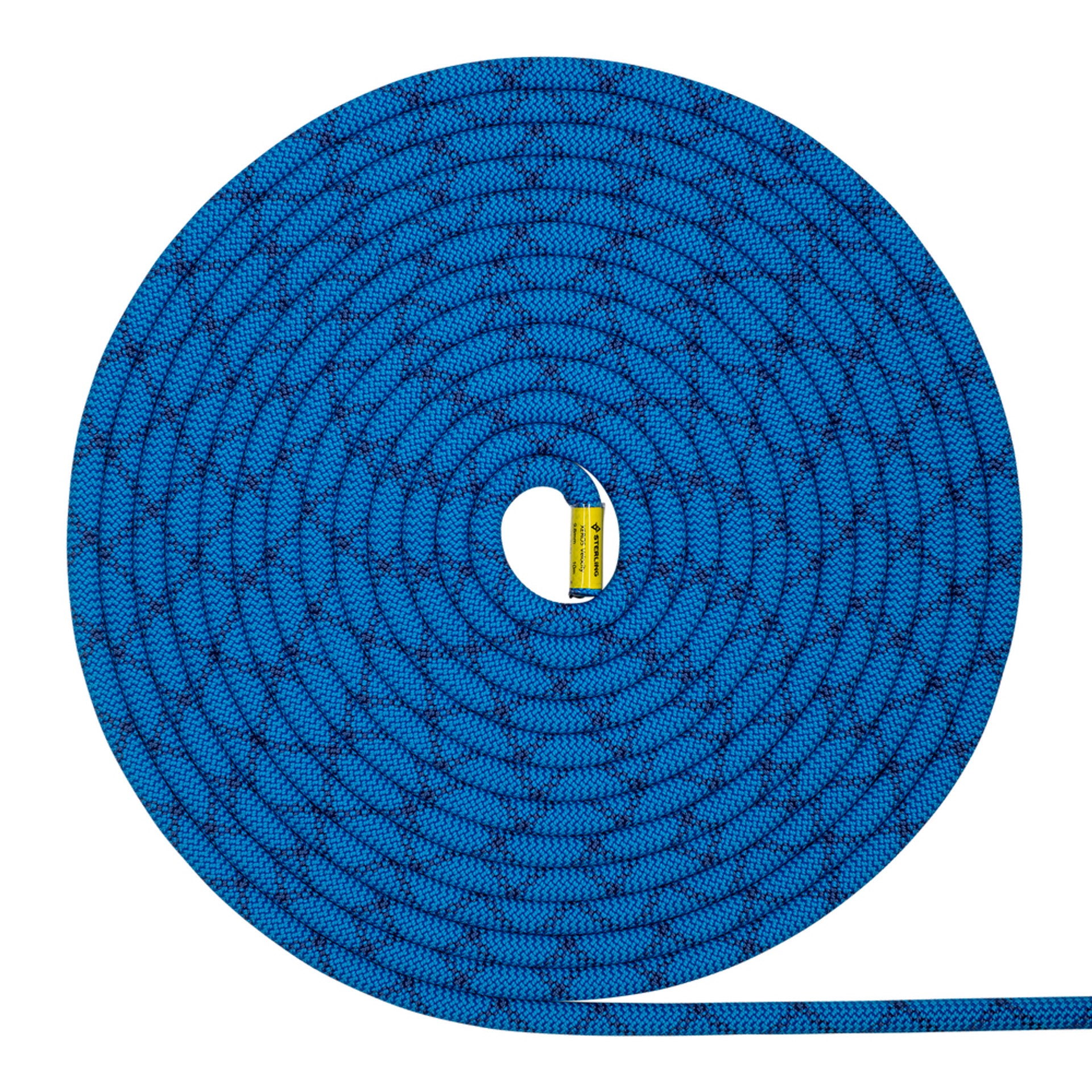
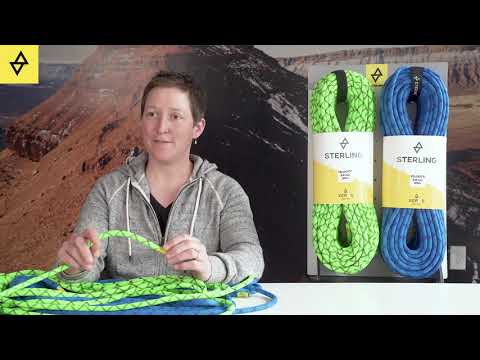
9.8 mm Velocity Xeros
Tier benefits:
Tier benefits:
The Sterling Velocity 9.8mm rope is our pick for a high-end workhorse rope. These ropes come uncoiled from the factory, saving you the hassle of untwisting a fresh rope. They come in 40m, 60m, 70m, and 80m lengths, each of which comes in a variety of colors. In our experience, the Sterling Xeros dry treatment holds up better than other brands. This means your rope will stay cleaner and wear slower than other ropes. Marginally lighter weight than other options and supple feel in hand make this rope a joy to both belay and climb with.
Pros
- Fantastic Dry Treatment, durability, and handling. Not factory coiled. Bi-pattern available.
Cons
- Expensive.
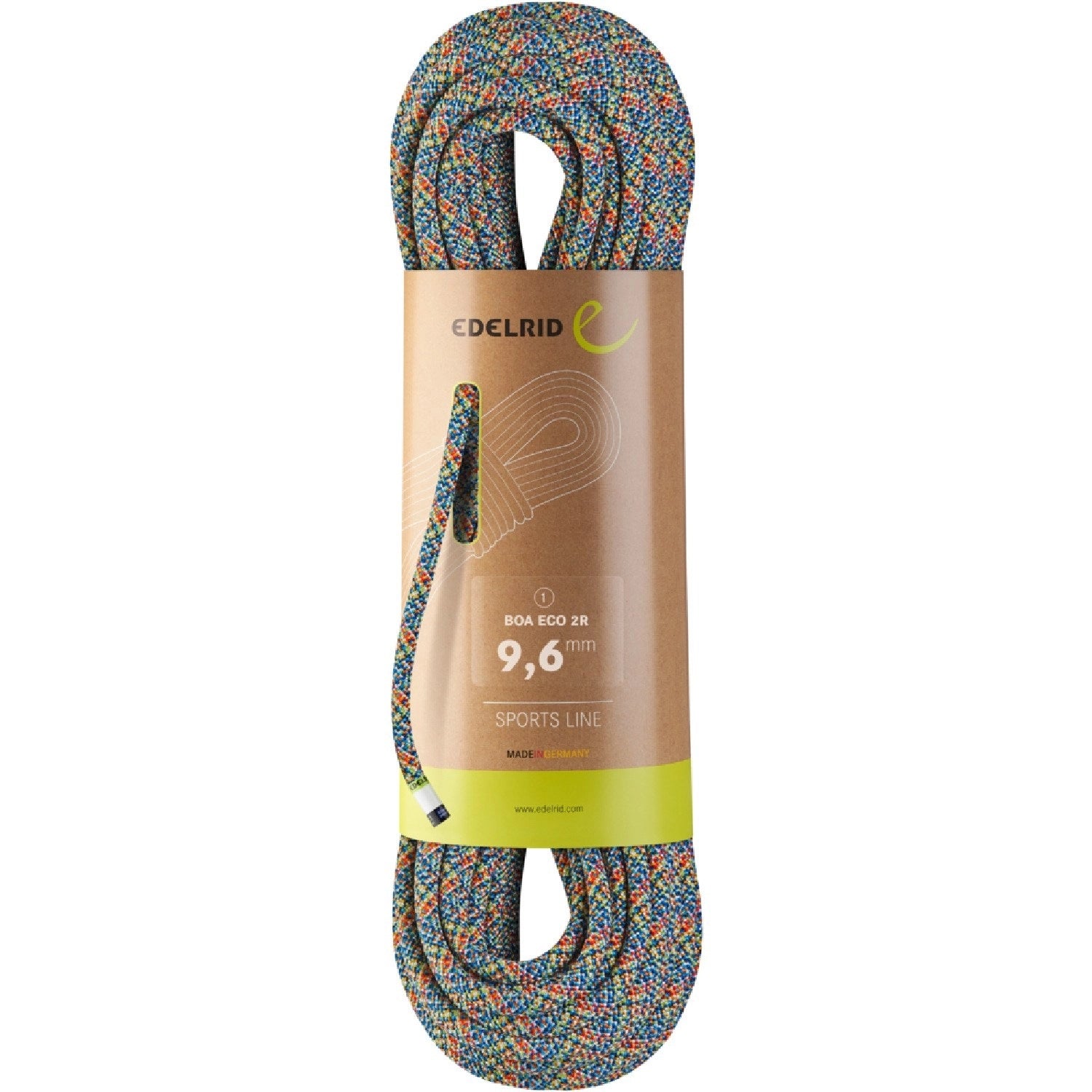

9.6 mm Boa Eco 2R
Tier benefits:
Tier benefits:
The Edelrid Boa Eco 9.8mm rope is our favorite budget rope. Available in 40m, 60m, and 70m lengths, we recommend this rope for single pitch sport climbing and gym leading. The 9.8mm diameter gives a good balance between durability and ease of use. While this rope may get grimier than a dry treated rope, they still hold up well if you are good about keeping it out of the dirt. As a plus, slightly different coloring on each rope can help you differentiate yours from your friends in a pinch.
Pros
- Cheap, eco friendly, belays well.
Cons
- Gets dirty easily, no dry treatment.
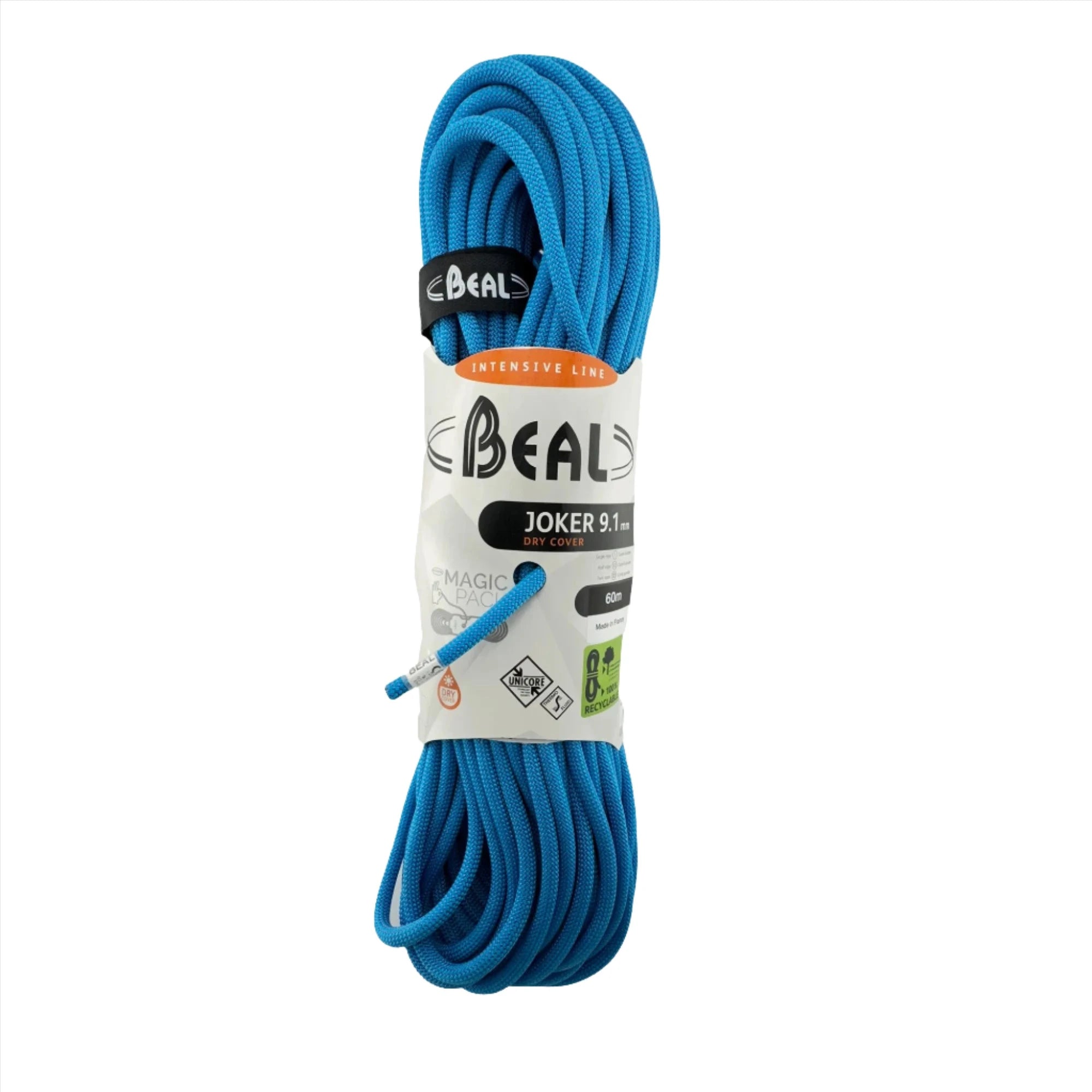
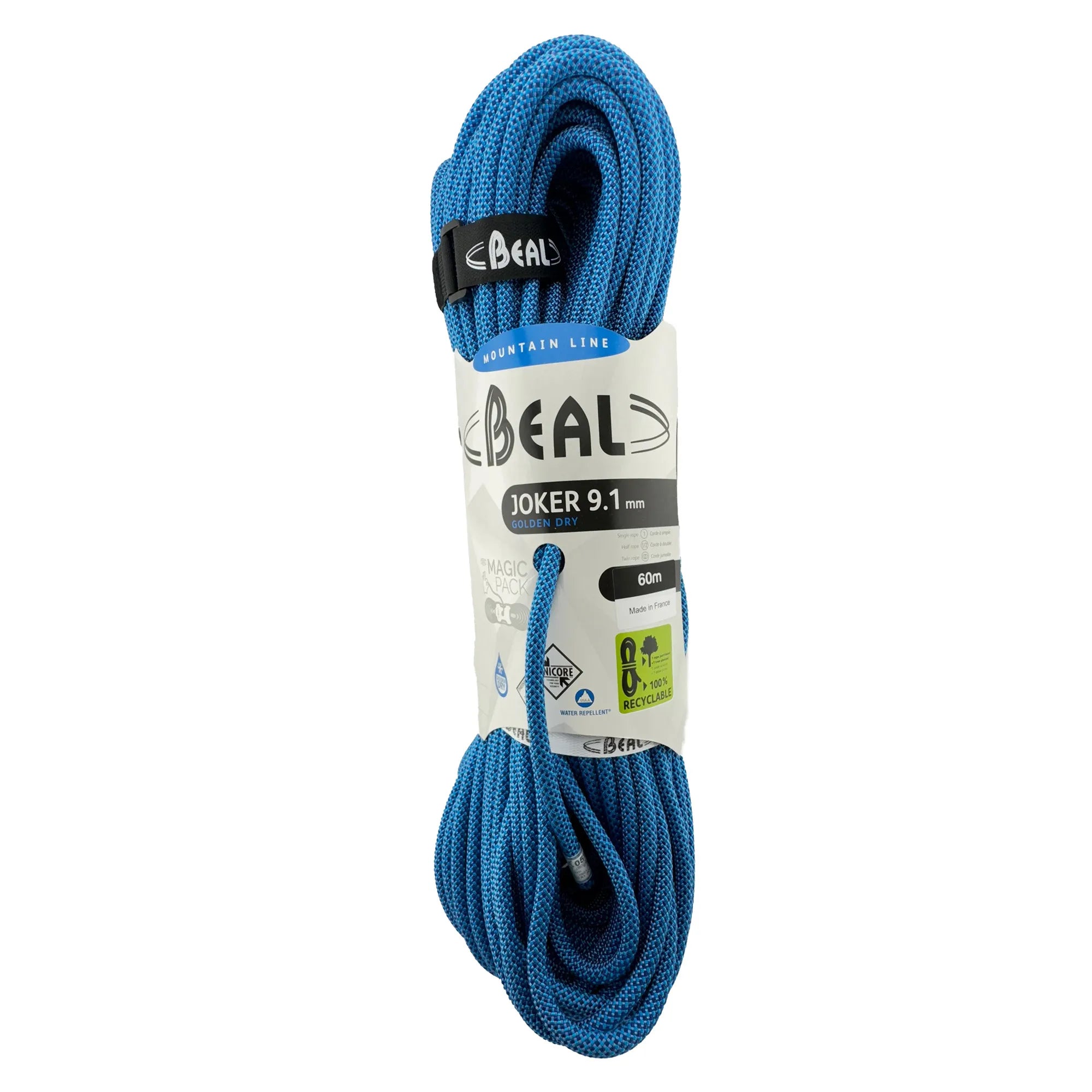

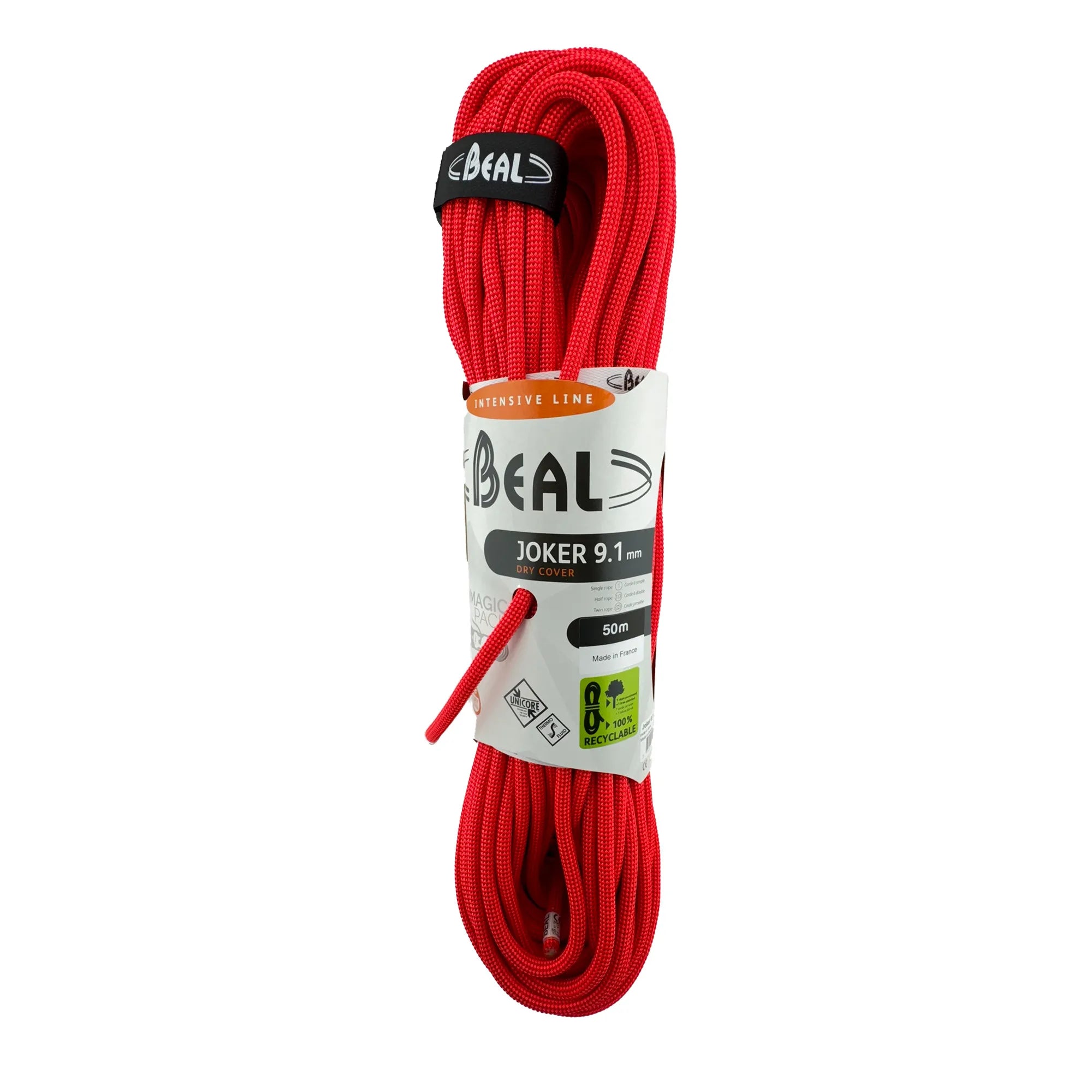
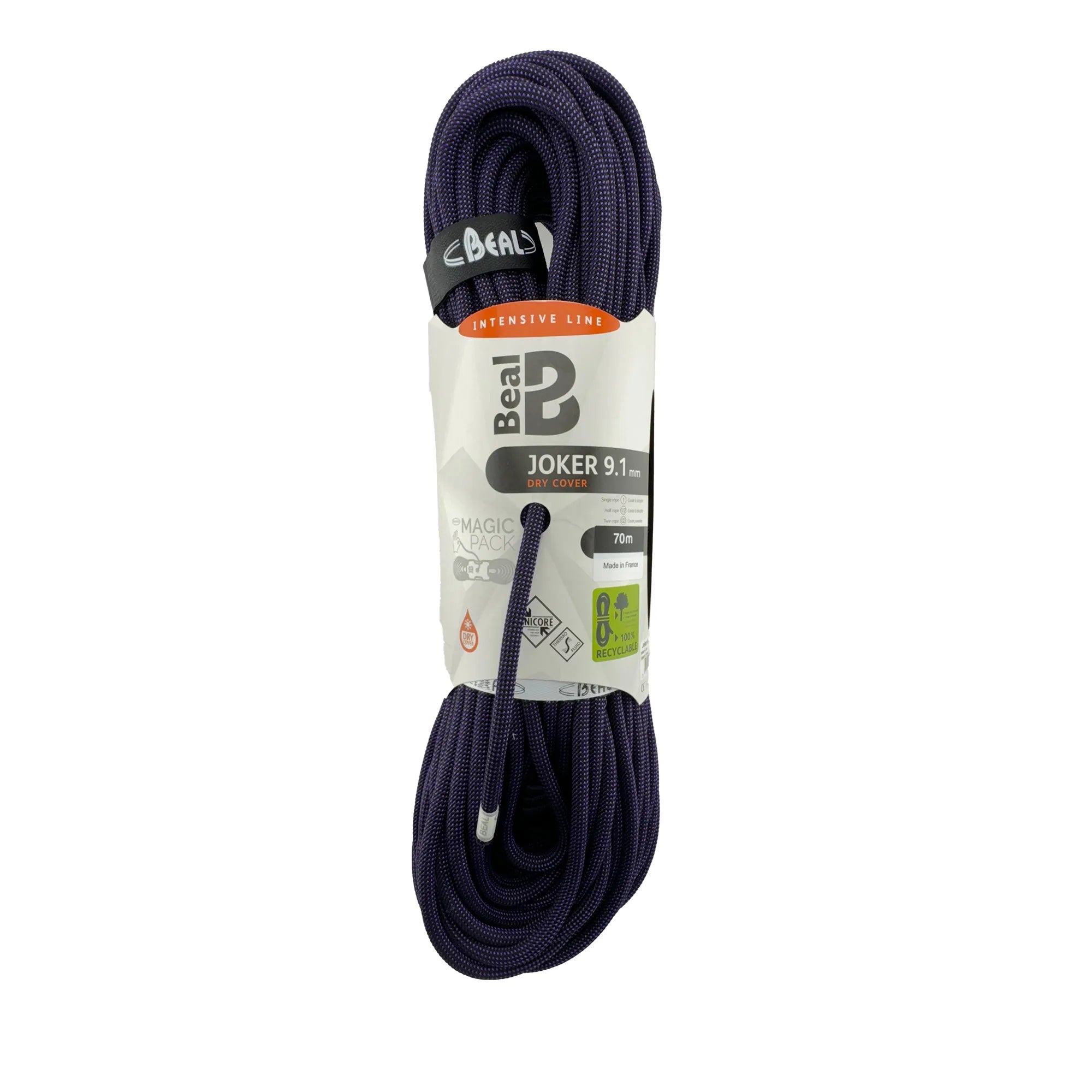

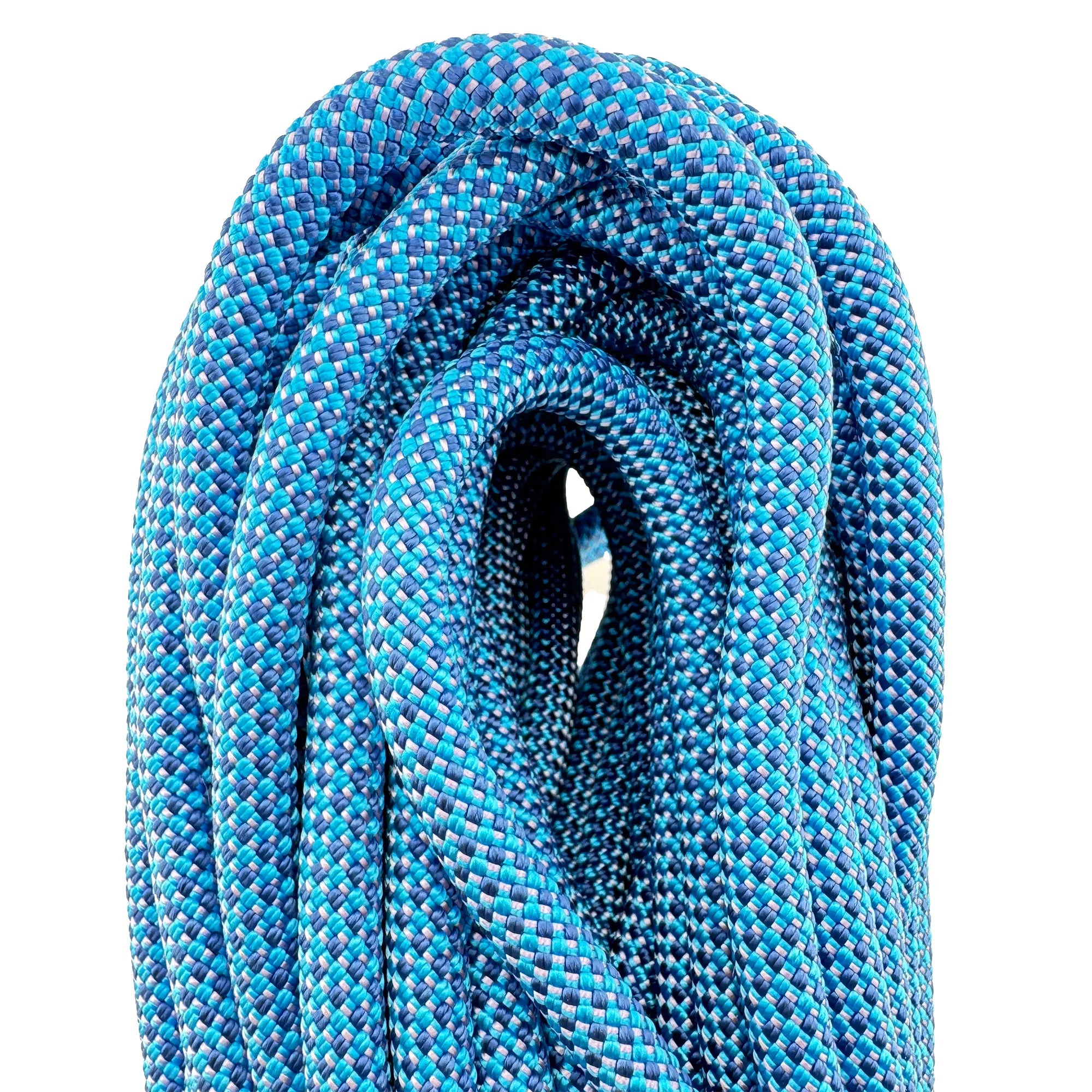

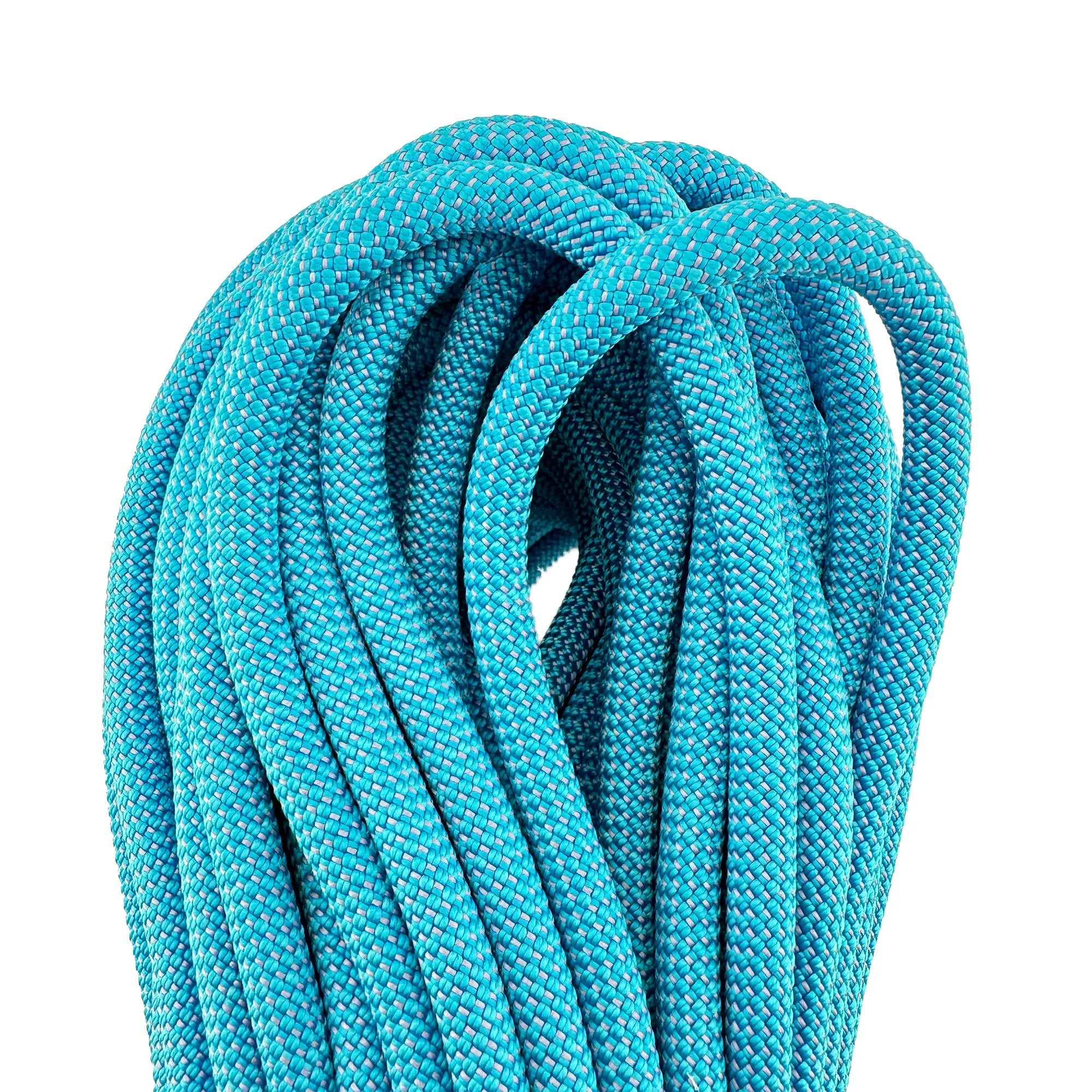
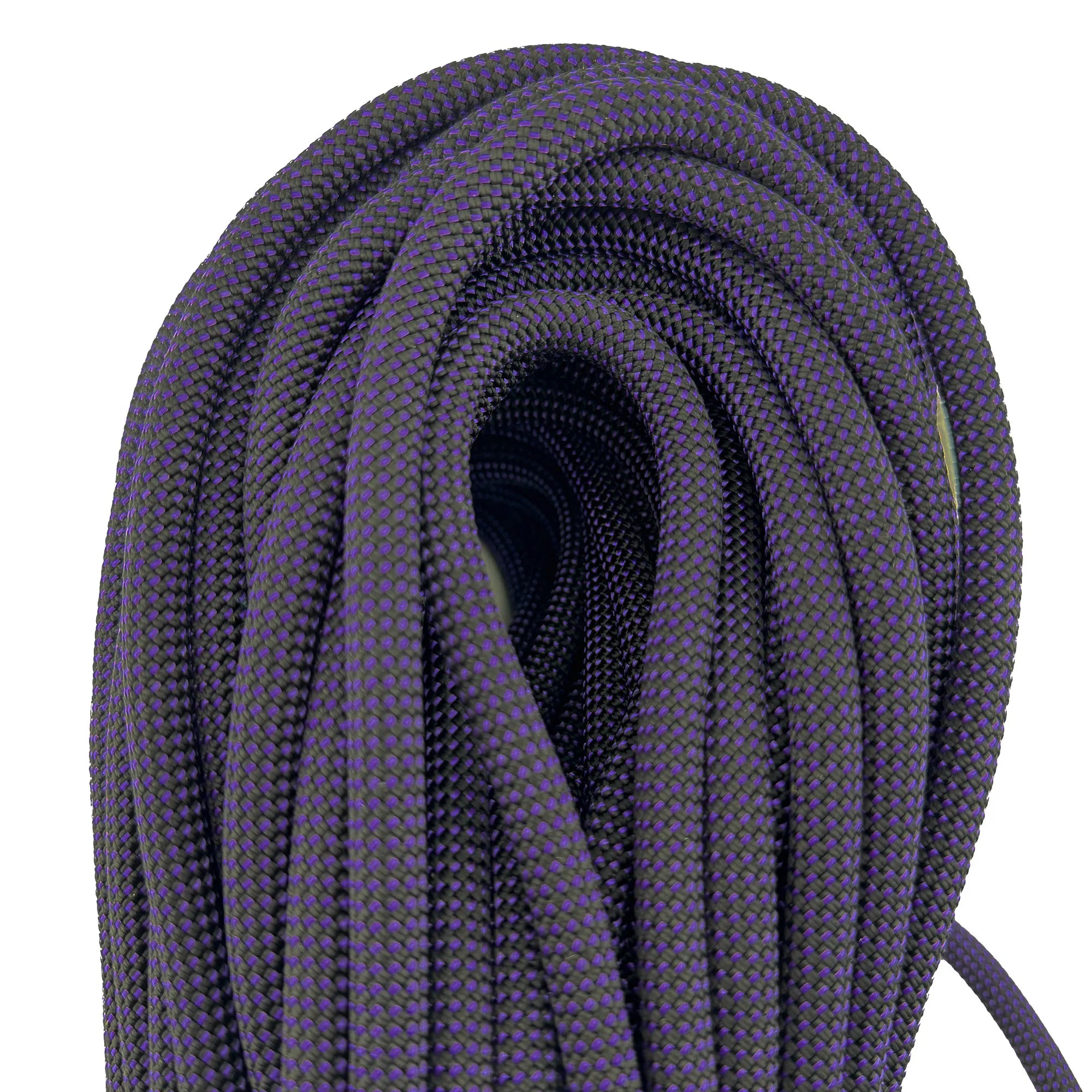
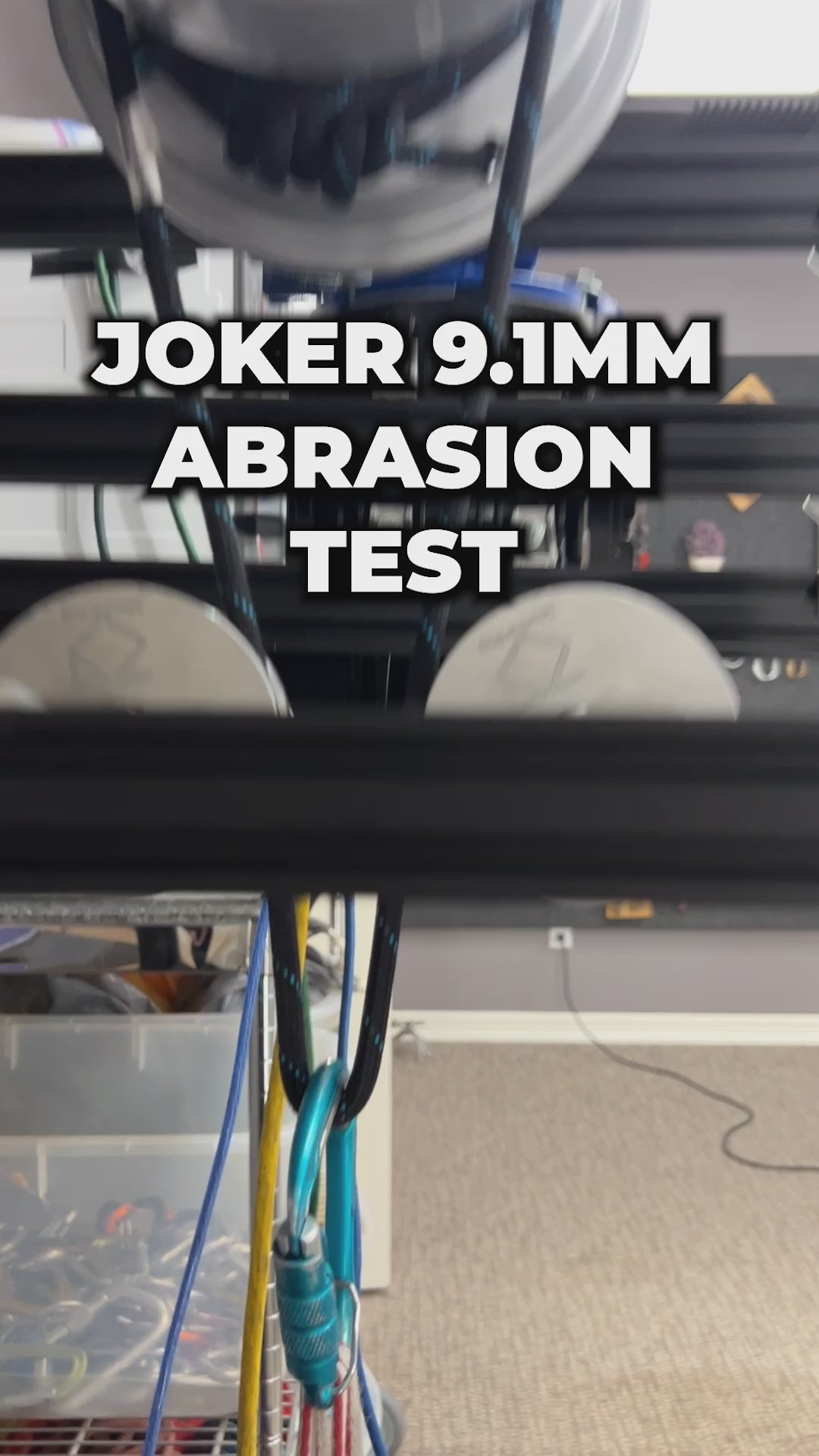
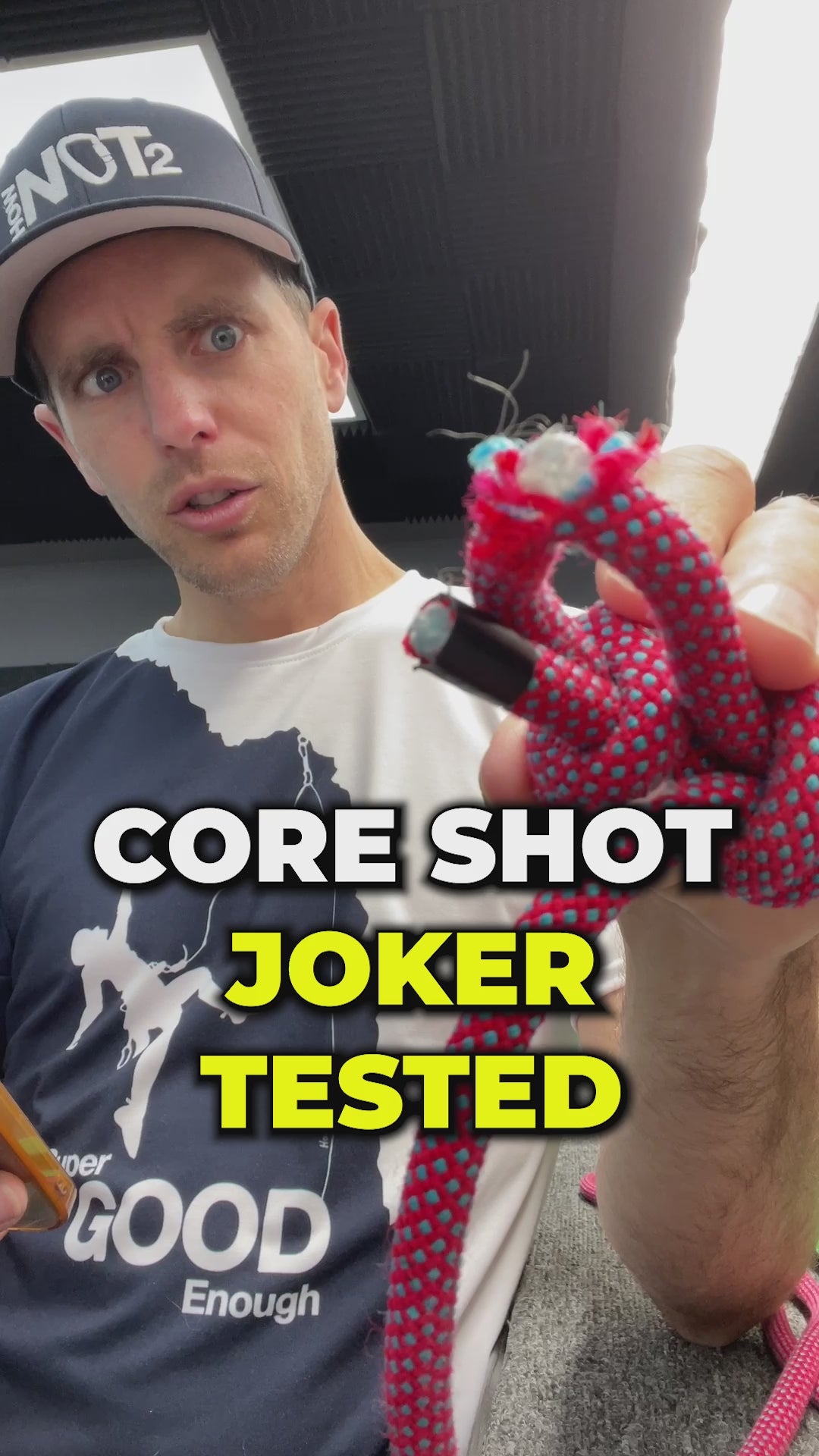
9.1 mm Joker Unicore
Tier benefits:
Tier benefits:
The Beal Joker 9.1mm rope is our pick for a lightweight, performance sport climbing option. While the thinner rope will not hold up as well to top rope laps and repeated whips, it’s light weight and thin diameter make hard pitches where every percentage point counts that much easier. Unicore technology can provide extra safety in certain situations.
For those wishing to spend a bit less, Beal offers a cheaper Dry Cover treatment instead of their full Golden Dry treatment. We carry this rope in 50m, 60m, 70m, and 80m lengths in orange and blue, Dry Cover and Golden Dry variations.
Pros
- Thin diameter handles incredibly. Unicore. Triple rated. Many length, color, and treatment options.
Cons
- Maybe less durable. Higher price point.
Harnesses
Harnesses preference is extremely personal and depends on the specific shape of your body. Just because your friend thinks a harness is comfortable does not mean it will work well for you. We recommend trying these on before purchasing. Choose the size where you are at the bottom of its adjustment range. For example, someone with a 32 inch waist should choose a harness that fits 32-36 over one that fits 30-34. Doing this ensures that gear loops will sit evenly on your body, which is super important when sport climbing.
![id=[47186246304059, 47186260754747, 47186260853051, 47186260951355, 47186261049659]](http://hownot2.com/cdn/shop/files/2870-M1.jpg?v=1756773439&width=2000)
![id=[47186260689211, 47186260787515, 47186260885819, 47186260984123, 47186261082427]](http://hownot2.com/cdn/shop/files/2870-M2.jpg?v=1756773439&width=2000)
![id=[47186246304059, 47186260754747, 47186260853051, 47186260951355, 47186261049659]](http://hownot2.com/cdn/shop/files/2255_1-2870-M1_BACK.jpg?v=1756773439&width=2000)
![id=[47186260689211, 47186260787515, 47186260885819, 47186260984123, 47186261082427]](http://hownot2.com/cdn/shop/files/2255_2-2870-M2_BACK.jpg?v=1756773439&width=2000)
![id=[47186246304059, 47186260754747, 47186260853051, 47186260951355, 47186261049659]](http://hownot2.com/cdn/shop/files/2255_4-2870-M1_B.jpg?v=1756773439&width=2000)
Energy CR 3
Tier benefits:
Tier benefits:
The CAMP Energy CR3 harness is a great budget harness. It features adjustable leg loops and a single adjustment point at the hips. At $50, we don’t think there is a better deal on a harness. Since this is a cheaper harness, there is less padding and slightly smaller gear loops. Ryan uses this harness for all around climbing and never realized it was the cheapest one we sell. The leg loops on this harness do not drop, so we don’t recommend it for activities where you will need to use the bathroom while wearing it.
Pros
- Cheap.
- Easily Adjustable.
Cons
- Can’t drop leg loops.
- Limited gear space.
![id=[47024563061051, 47024563093819, 47024563126587, 47024563159355, 47024563224891, 47024563257659]](http://hownot2.com/cdn/shop/files/10783_source_1647584367_0a8d8d9c-dd39-48d9-b8d2-e181e3940727.webp?v=1756773590&width=1000)
![id=[47024563061051, 47024563093819, 47024563126587, 47024563159355, 47024563224891, 47024563257659]](http://hownot2.com/cdn/shop/files/585c5c48924a5fee14c9a5a11f51a7190c434e81__11999_44a7ab03-f70c-466a-98c2-c1c2040df7ab.webp?v=1756773590&width=1000)
![id=[47024587178299, 47024587211067, 47024587243835, 47024587276603, 47024587309371]](http://hownot2.com/cdn/shop/files/10788_source_1691129077_e99b1c3f-470e-443f-9ca3-779310b16a6b.webp?v=1756773590&width=1000)
![id=[47024587178299, 47024587211067, 47024587243835, 47024587276603, 47024587309371]](http://hownot2.com/cdn/shop/files/84716310278babc7dd561bb13a2c4efbccf09d9a__23824_a58001bf-6045-402e-aa53-bc5a3309323a.webp?v=1756773590&width=1000)
![id=[48067607527739, 48067608379707, 48067608838459, 48067608936763, 48067609461051, 48067609493819]](http://hownot2.com/cdn/shop/files/d4a1aaab237d1d844ece37b1fd682dff27a19a99__79350.jpg?v=1756773591&width=1000)
![id=[48067607527739, 48067608379707, 48067608838459, 48067608936763, 48067609461051, 48067609493819]](http://hownot2.com/cdn/shop/files/c86e20462adcca09a80f36829e900613f3d837e2__78980.jpg?v=1756773591&width=1000)
![id=[48067607527739, 48067608379707, 48067608838459, 48067608936763, 48067609461051, 48067609493819]](http://hownot2.com/cdn/shop/files/c49edc34d20f68a95a9cf630ec05def4dff42a4b__09670.jpg?v=1756773591&width=1000)
![id=[48067607527739, 48067608379707, 48067608838459, 48067608936763, 48067609461051, 48067609493819]](http://hownot2.com/cdn/shop/files/3283c9b72808e3b10a534bd3806e718e96add207__60470.jpg?v=1756773591&width=1000)
![id=[48067614736699, 48067615129915, 48067615228219, 48067616047419, 48067616112955]](http://hownot2.com/cdn/shop/files/68d6769bcf916daf2730d82bc06b9a1f90b7290a__10930.jpg?v=1756773591&width=1000)
![id=[48067614736699, 48067615129915, 48067615228219, 48067616047419, 48067616112955]](http://hownot2.com/cdn/shop/files/84854f7e077b1f07939d3b043231b274af131685__05923.jpg?v=1756773591&width=1000)
![id=[48067614736699, 48067615129915, 48067615228219, 48067616047419, 48067616112955]](http://hownot2.com/cdn/shop/files/f73b8d7225e12ad248c838d9584416b247671e2c__09429.jpg?v=1756773591&width=1000)
![id=[48067614736699, 48067615129915, 48067615228219, 48067616047419, 48067616112955]](http://hownot2.com/cdn/shop/files/a2d86ef8d72a4cb096eb651e72819cd1f44a7e06__39639.jpg?v=1756773591&width=1000)
![id=[47024563061051, 47024563093819, 47024563126587, 47024563159355, 47024563224891, 47024563257659, 47024587178299, 47024587211067, 47024587243835, 47024587276603, 47024587309371, 48067607527739, 48067608379707, 48067608838459, 48067608936763, 48067609461051, 48067609493819, 48067614736699, 48067615129915, 48067615228219, 48067616047419, 48067616112955]](http://hownot2.com/cdn/shop/files/preview_images/hqdefault_c44e9a67-6166-4866-955a-5c7fa260ad9c.jpg?v=1695925384&width=480)
![id=[47024563061051, 47024563093819, 47024563126587, 47024563159355, 47024563224891, 47024563257659, 47024587178299, 47024587211067, 47024587243835, 47024587276603, 47024587309371, 48067607527739, 48067608379707, 48067608838459, 48067608936763, 48067609461051, 48067609493819, 48067614736699, 48067615129915, 48067615228219, 48067616047419, 48067616112955]](http://hownot2.com/cdn/shop/files/preview_images/hqdefault_f46f7725-7c89-4d9e-82b4-e42dcf8d71ef.jpg?v=1695925368&width=480)
Solution
Tier benefits:
Tier benefits:
The Black Diamond Solution is consistently rated as one of the most comfortable sport climbing harnesses. Elastic leg loops and a single waist adjustment make this harness a breeze to put on and move around in. We rarely feel the need to take this off when sitting around the crag or walking from route to route. 4 molded plastic gear loops, while not huge, provide ample space for a standard sport climbing rack. No leg loop adjustment means this harness wont work perfectly for everyone’s body, especially those with a bigger thigh-to-waist ratio, but if it does you are in for a treat.
Pros
- Very Comfortable.
- High Mobility.
Cons
- Elastic leg loops don’t work for all.
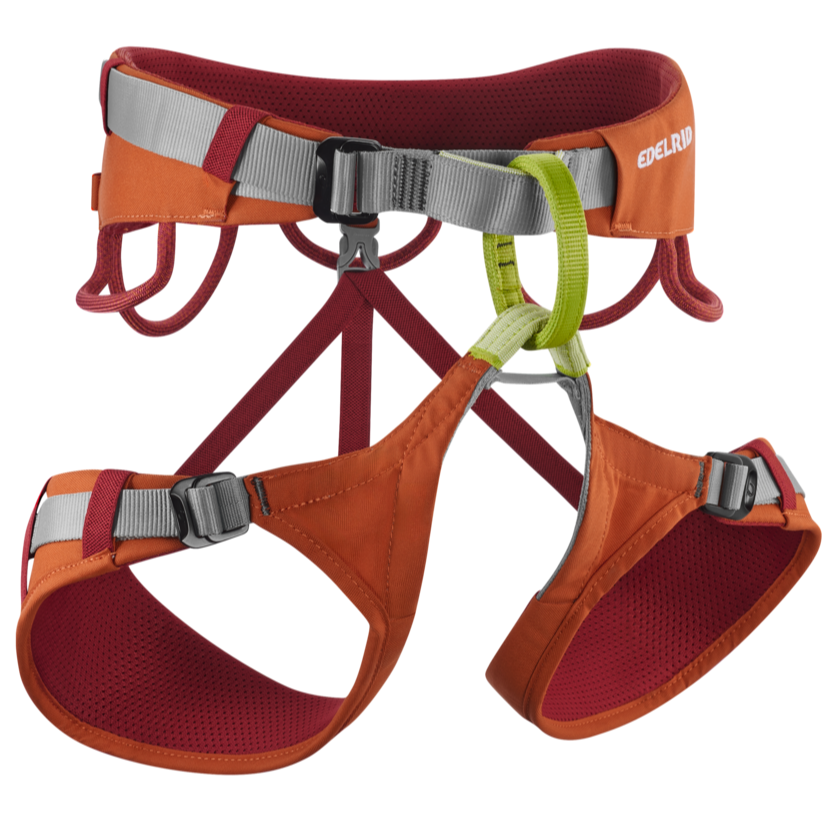
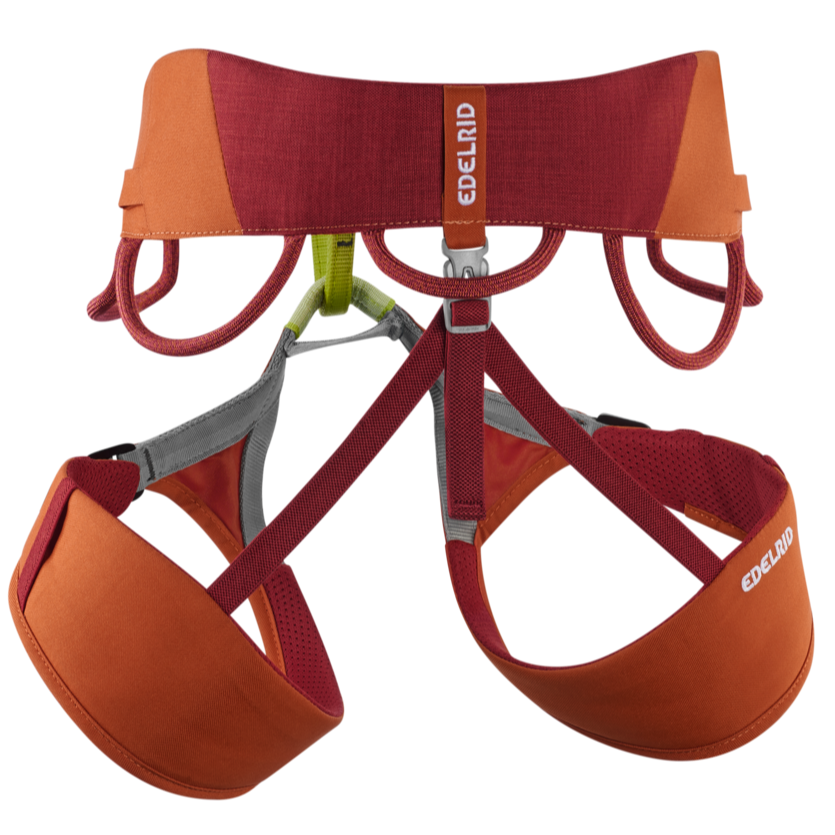
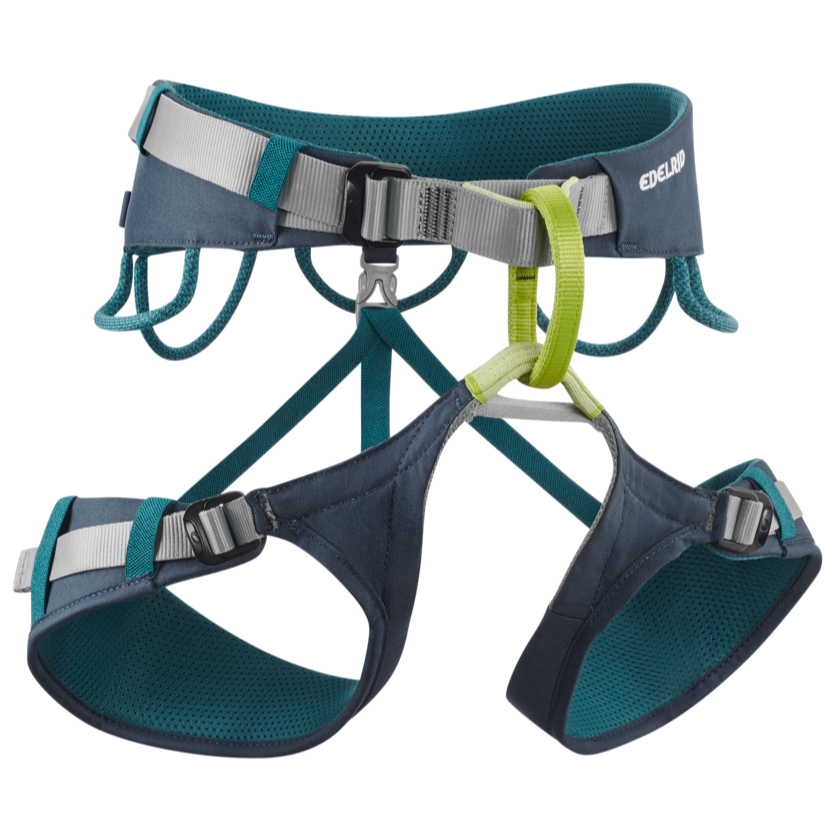
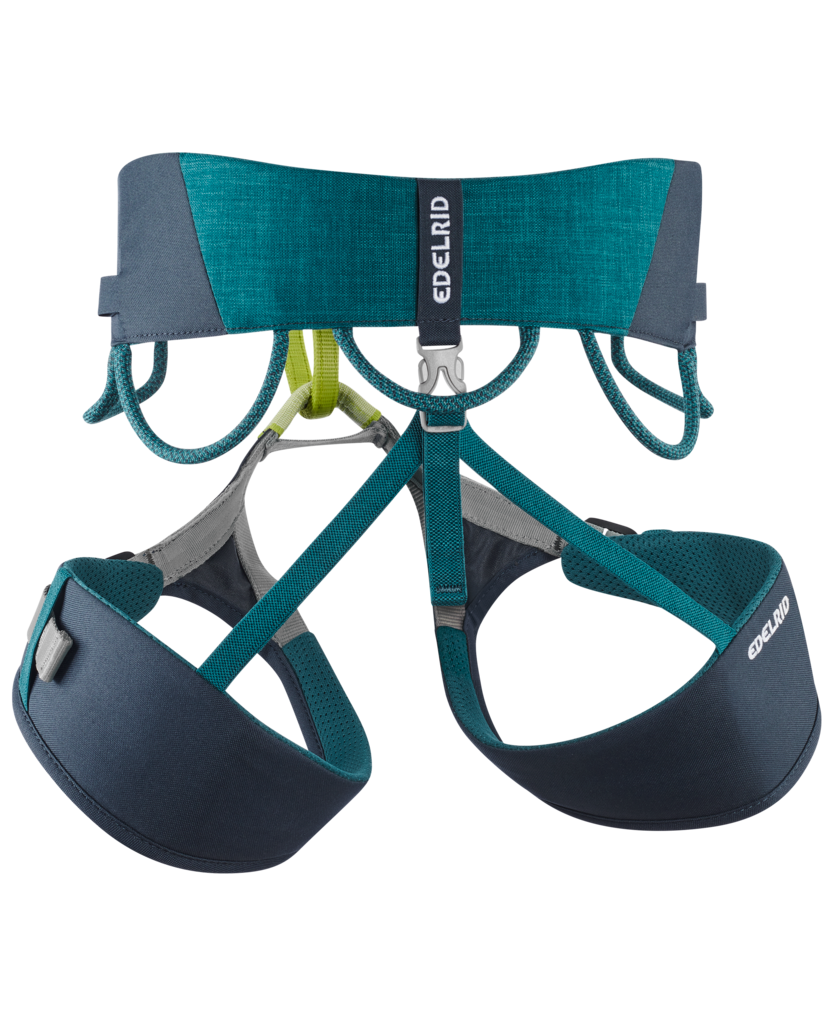
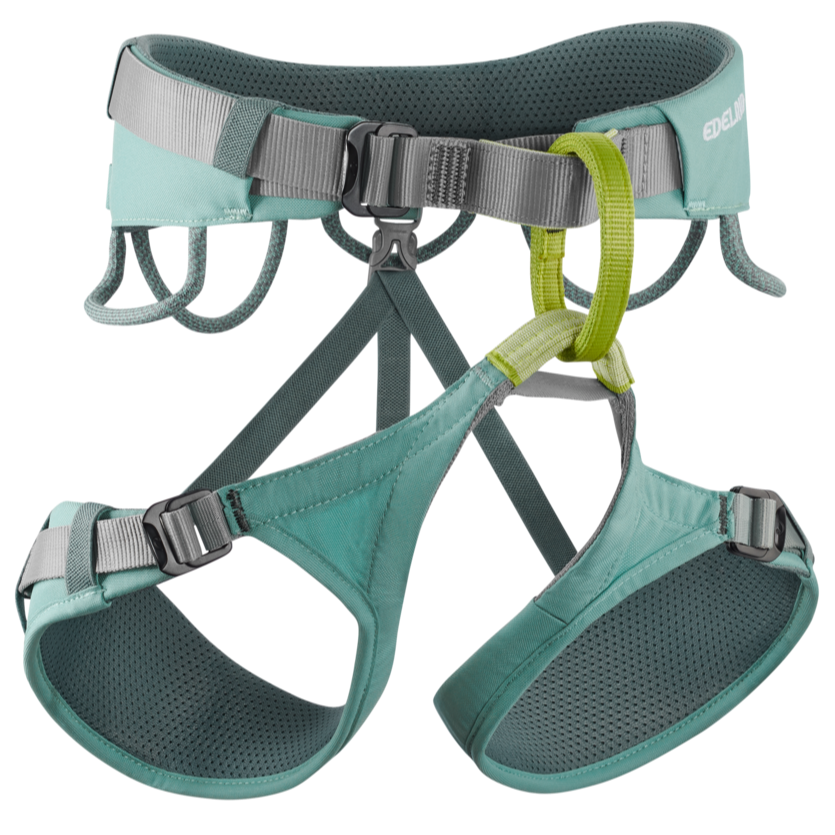
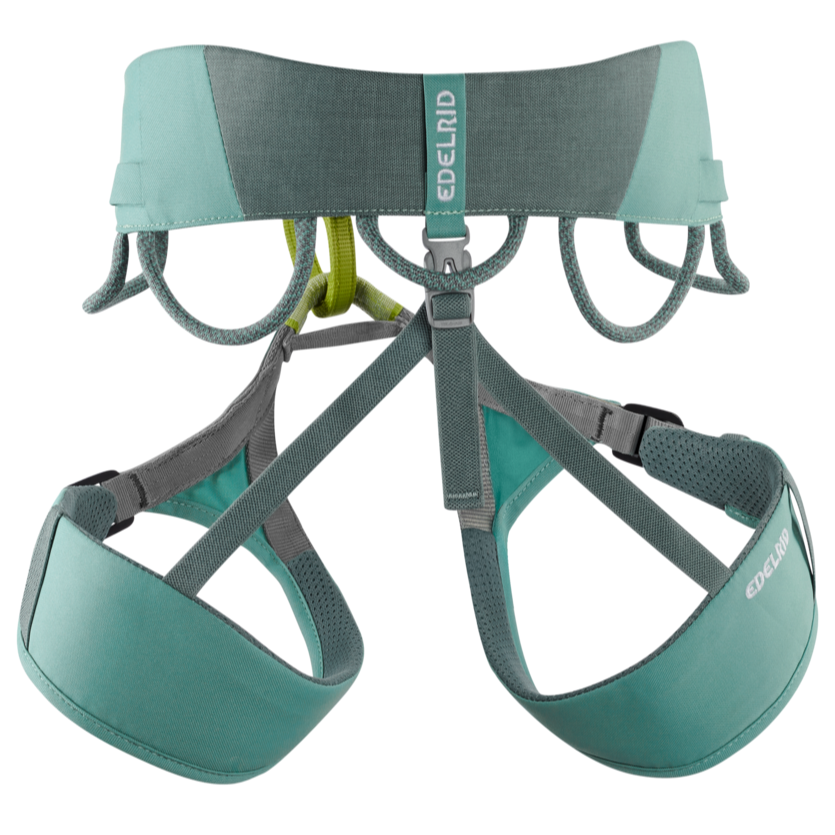

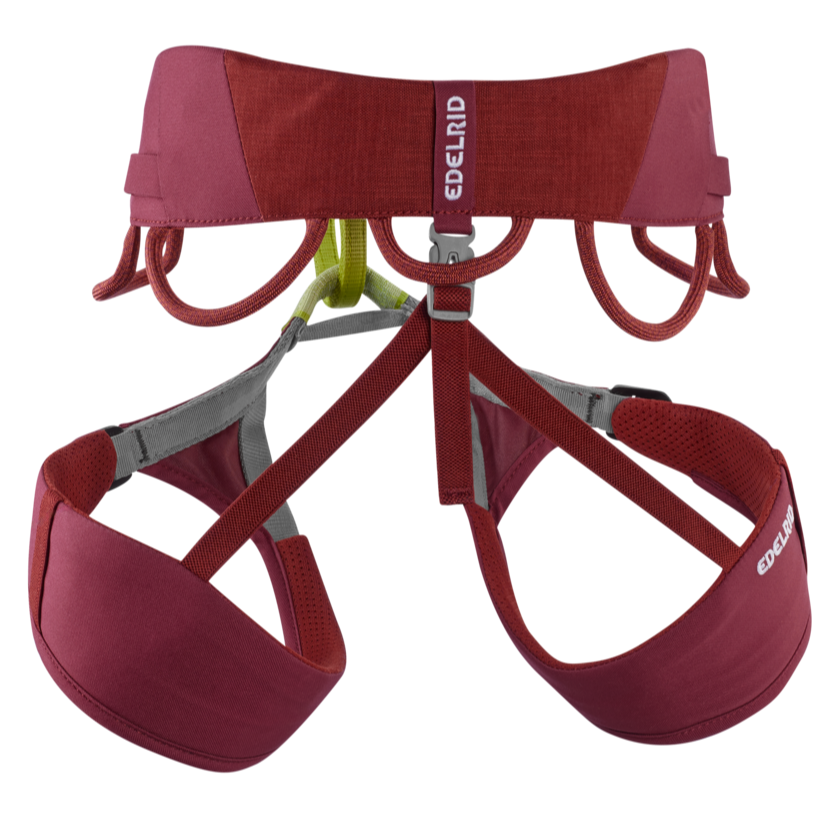
Jay / Jayne IV
Tier benefits:
Tier benefits:
The Edelrid Jay and Jayne harnesses are our recommendation for a harness that will fit nearly everyone. Each size has over a foot of waist adjustability. They manage this by detaching the hip padding from the underlying weight bearing elements, which means you can slide the pads so that the gear loops are symmetrical on your body regardless of where you sit in its adjustment range. Other harnesses that feature this ease of fit typically have two waist buckles, whereas the Jay and Jayne only have one. We think this hits the best of both worlds when it comes to ease of use and security of fit. On top of this, we also think it's quite comfortable. This harness has plenty of space to rack sport climbing gear, but you might struggle to fit anything more than this.
Pros
- Huge adjustment range.
- Comfortable.
Cons
- Smaller gear loops.
- Heavier than other options.
Helmets
It’s unfortunate so many of the amazing photos of pro climbing athletes are without helmets. You really want to protect that wet computer in your skull. Not only rocks or falling gear can hit your head, but if you take a whipper, it’s not that uncommon to get flipped upside down and have your head smack against the wall. Full plastic helmets are going to be cheaper but heavier and foam helmets are going to cost more and not last as long. There are some hybrid ones that try to hit the best of both worlds, get it?

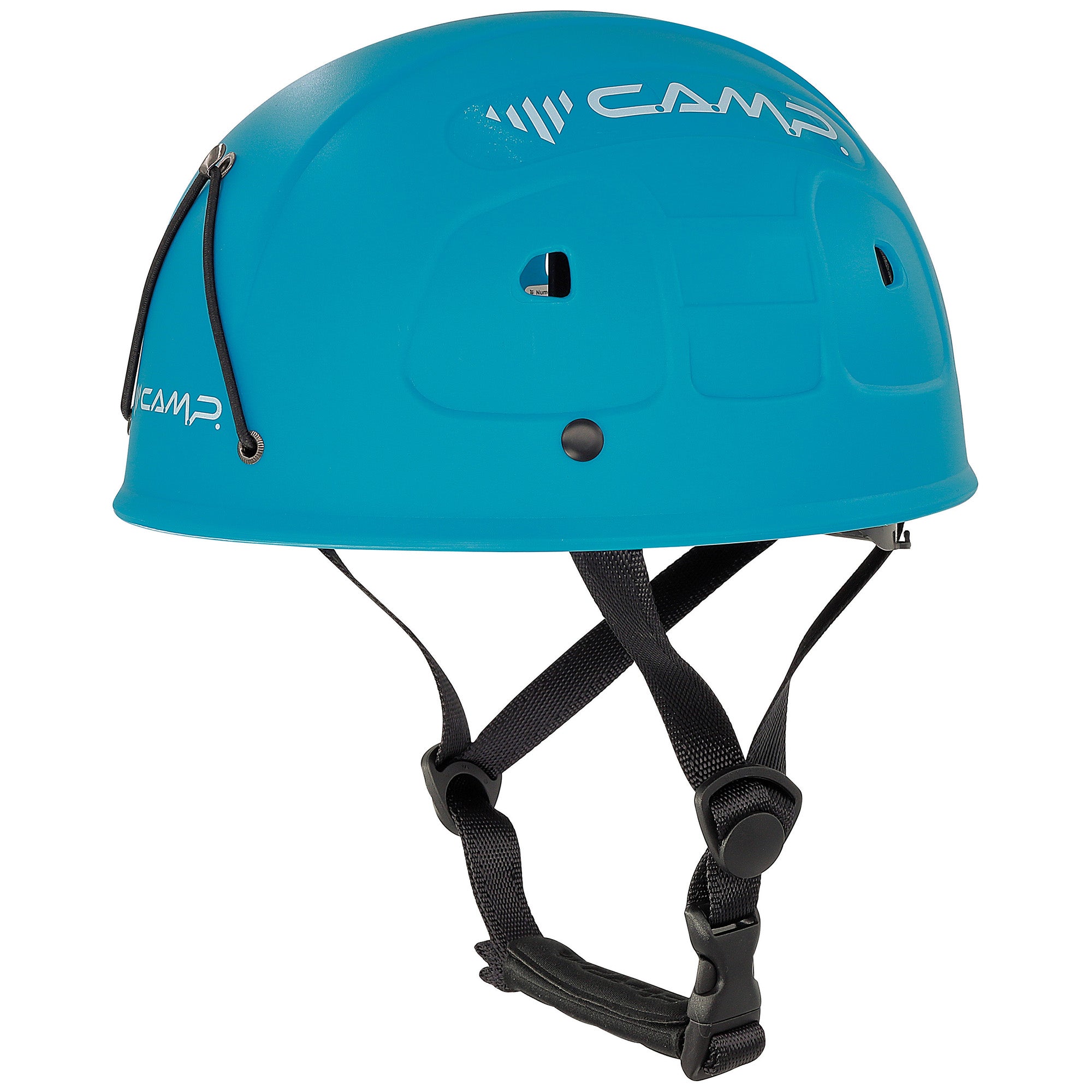
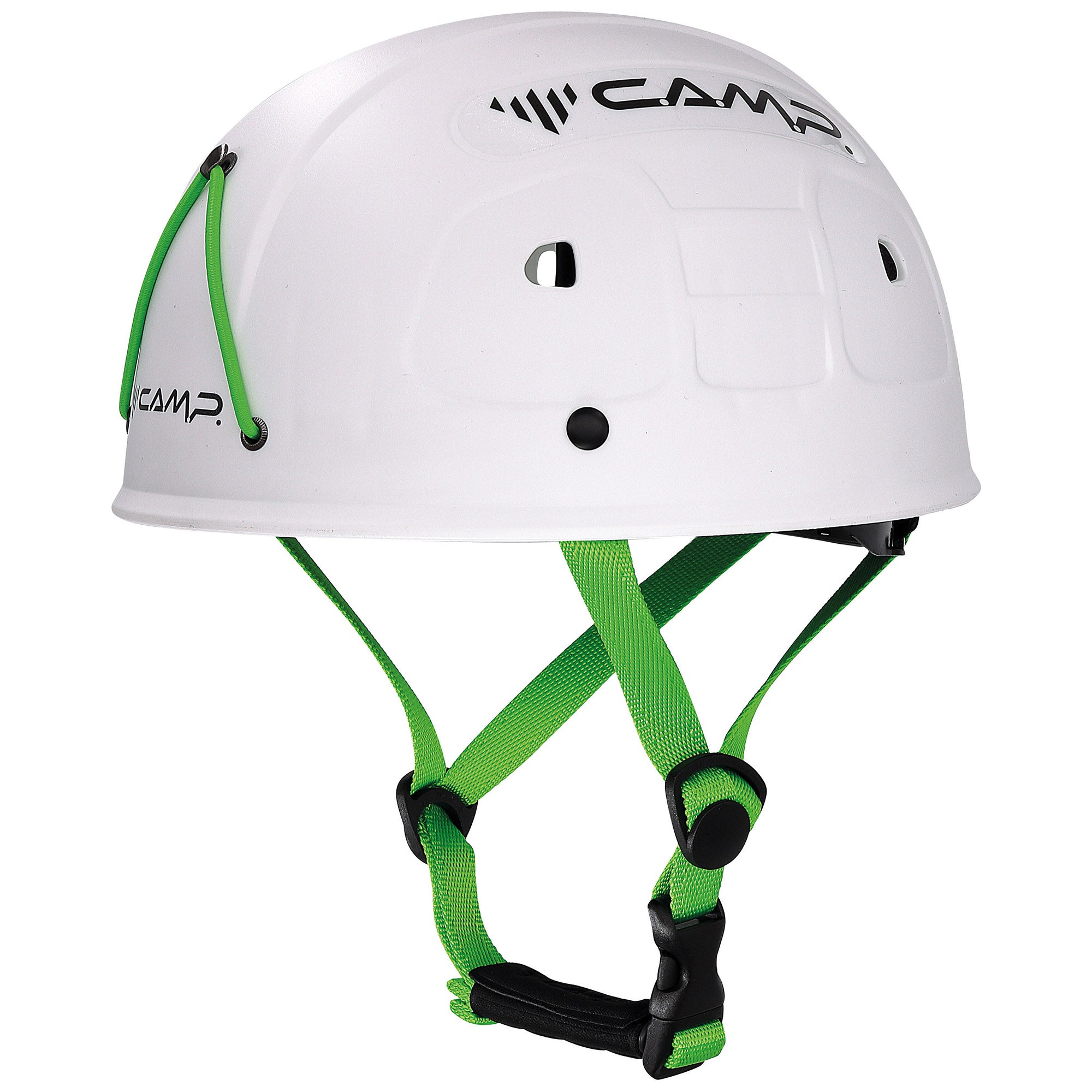
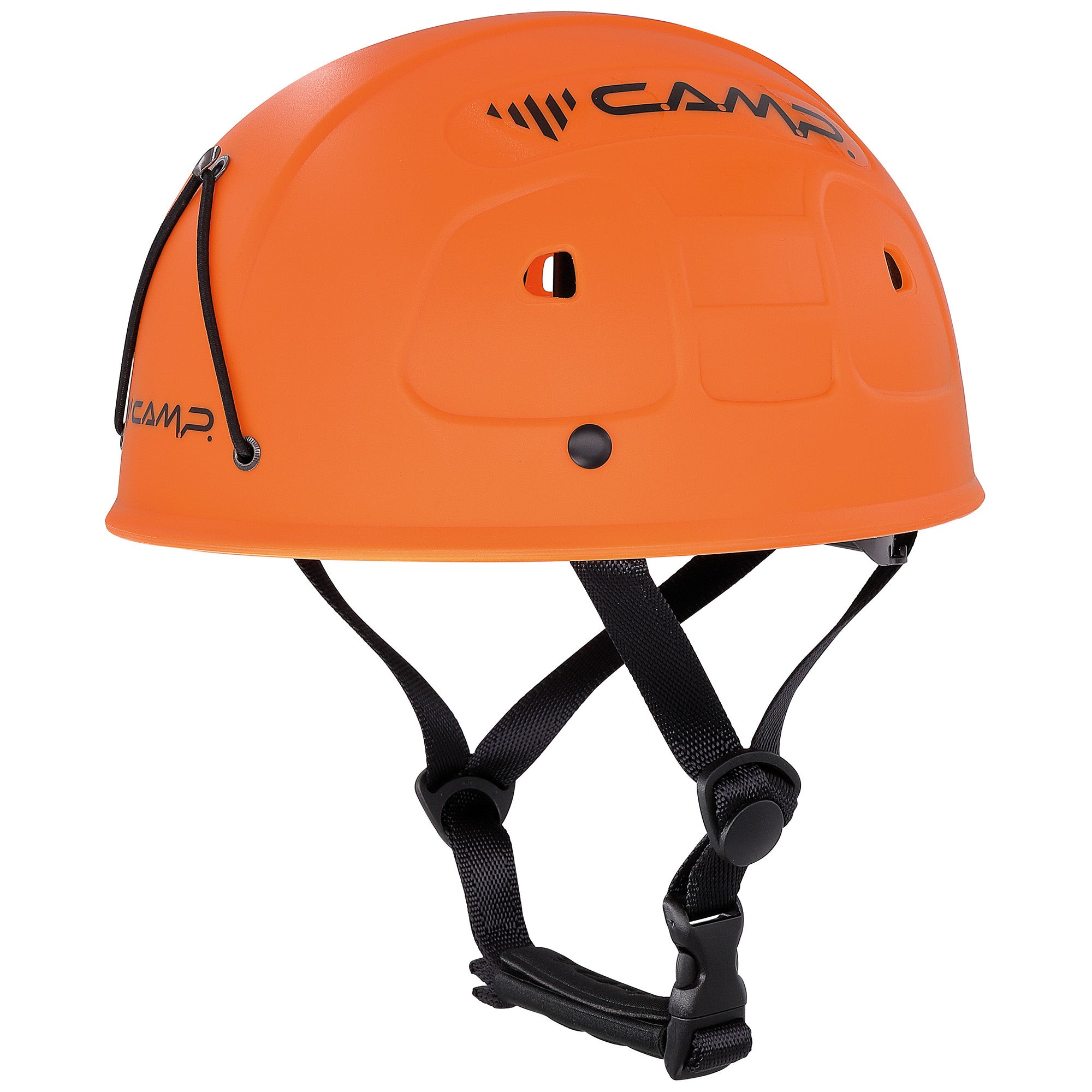
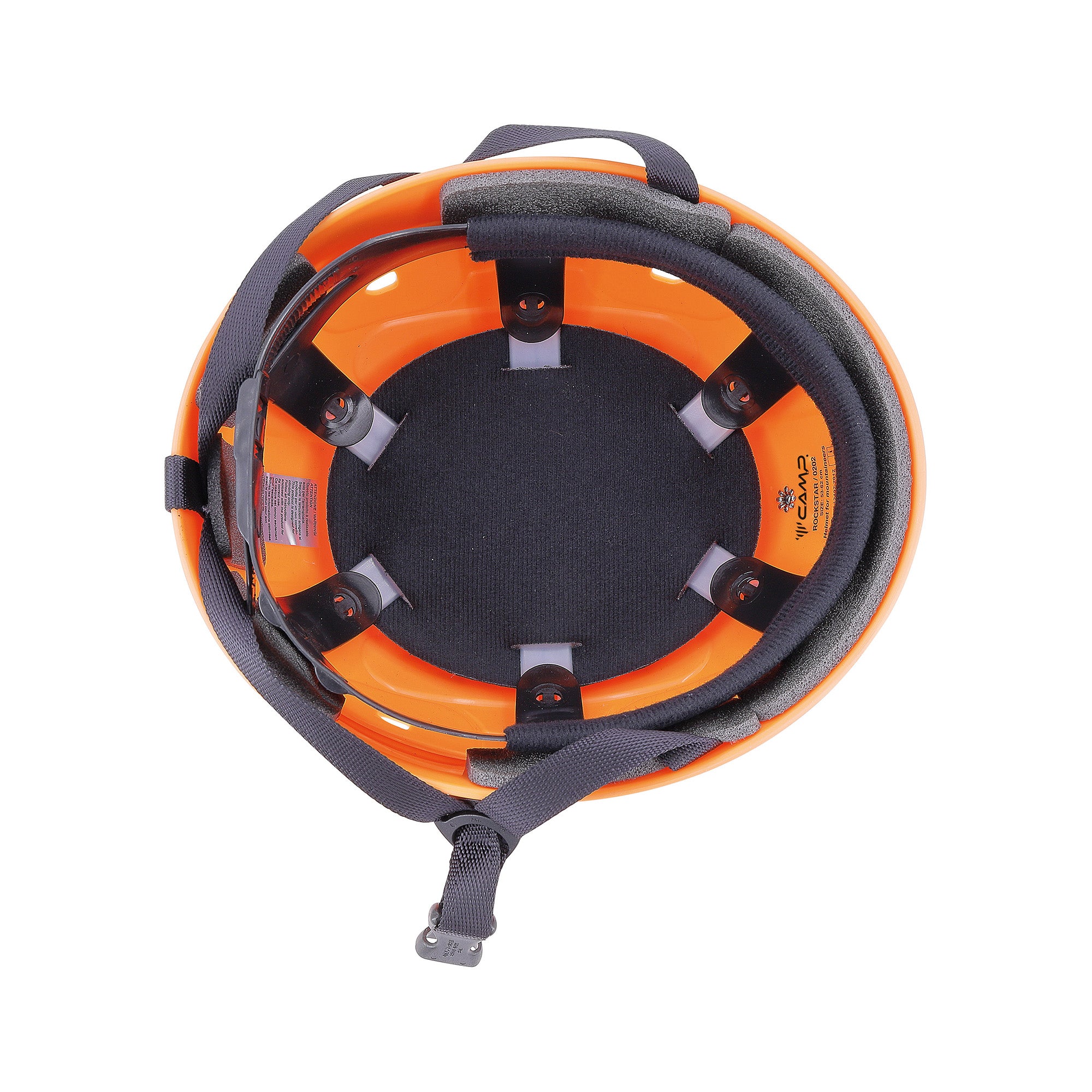
Rockstar
Tier benefits:
Tier benefits:
The CAMP Rockstar is the lowest cost helmet we sell. Full plastic shell construction with very little foam contributes to this helmet’s robust feeling and heavy weight. Wearing this helmet for long periods of time might be uncomfortable due to its lack of padding and hefty mass. If this price point is what it takes for you to wear a helmet, or if you simply don't care about weight, we cannot recommend this helmet enough. Otherwise, you are probably better off spending a little extra for a much more comfortable helmet.
Pros
- Low cost. Many color options.
Cons
- Heavy, less comfortable
![orange helmet half dome, id=[47084196299067]](http://hownot2.com/cdn/shop/files/27f0beafc77d59161665e0c16865c6a43b8f2230__31737.webp?v=1756773701&width=1000)
![Grey Helmet id=[47084196266299]](http://hownot2.com/cdn/shop/files/27cf4e75725a9e995a84dbd8a35f02e8e3bf6649__50635.webp?v=1756773701&width=1000)
![id=[47084196331835]](http://hownot2.com/cdn/shop/files/d5516b2dce9e092164ff163493ddbb49c5fabad4__11747.webp?v=1756773701&width=1000)
![id=[49397658943803, 50104096981307]](http://hownot2.com/cdn/shop/files/Octane-Half-Dome-BD.jpg?v=1756773701&width=1000)
![id=[46403912302907]](http://hownot2.com/cdn/shop/files/1de1d561-edd4-441e-88e4-4613a2a9168c.webp?v=1756773701&width=2000)
![id=[50434499805499]](http://hownot2.com/cdn/shop/files/6b0fc9c0-58b2-42db-9ee2-ba3ec92022ce.webp?v=1756773701&width=2000)
Half Dome
Tier benefits:
Tier benefits:
The Black Diamond Half Dome is the helmet we see most commonly at the crag, and for good reason. This helmet is relatively inexpensive and features a durable full plastic shell. While still on the heavier end, a foam liner helps keep this helmet’s weight slightly lower than other budget options and an easily adjustable harness makes it easy to fit hoods or hats underneath. Black Diamond helmets run a little bigger than other brands, so they may work better for those of you with large heads. This helmet comes in many color options and a women’s specific version to better accommodate a ponytail.
Pros
- Lower end pricepoint, easily adjustable, women’s version to help accommodate hair. Many color options.
Cons
- Slightly heavier than higher end options.
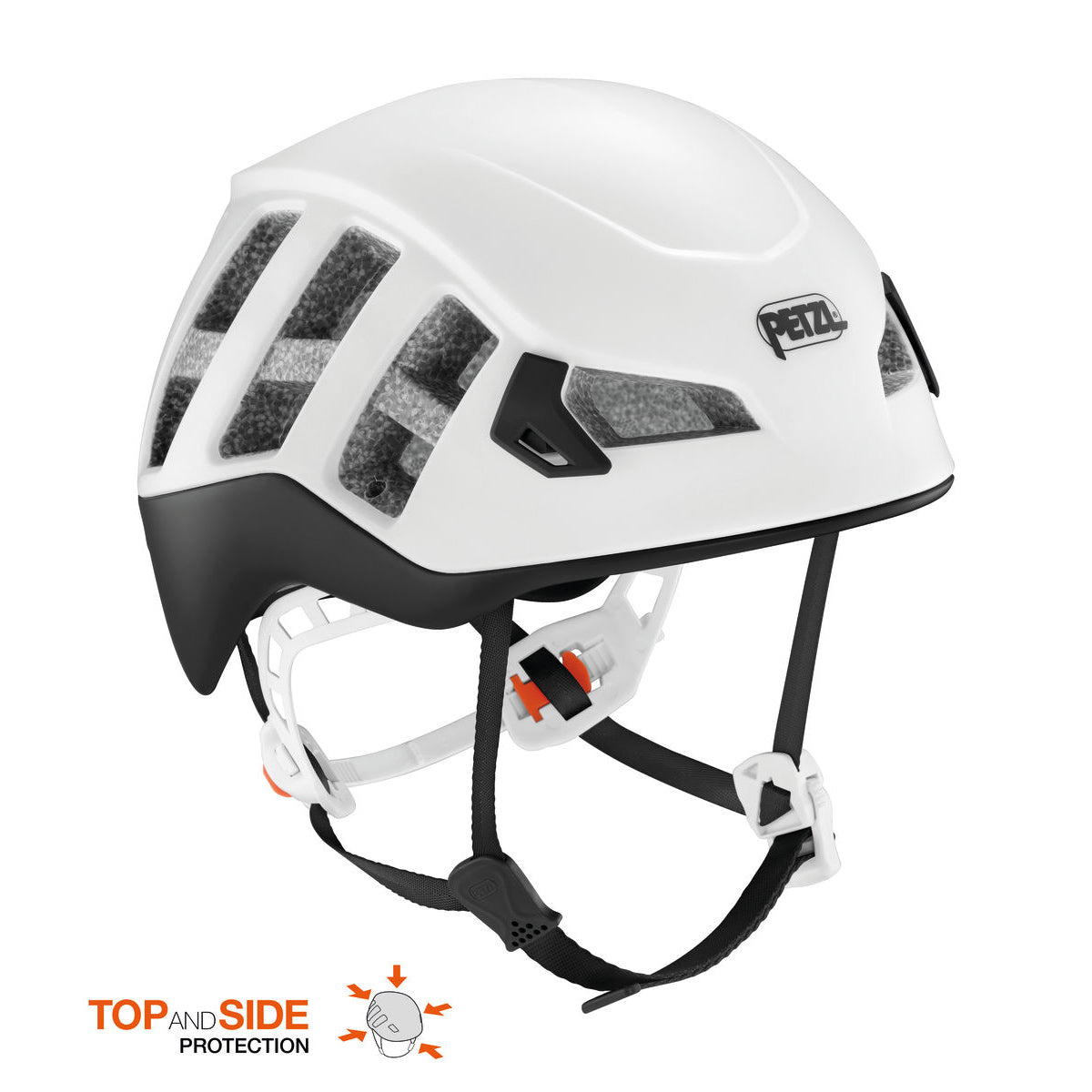
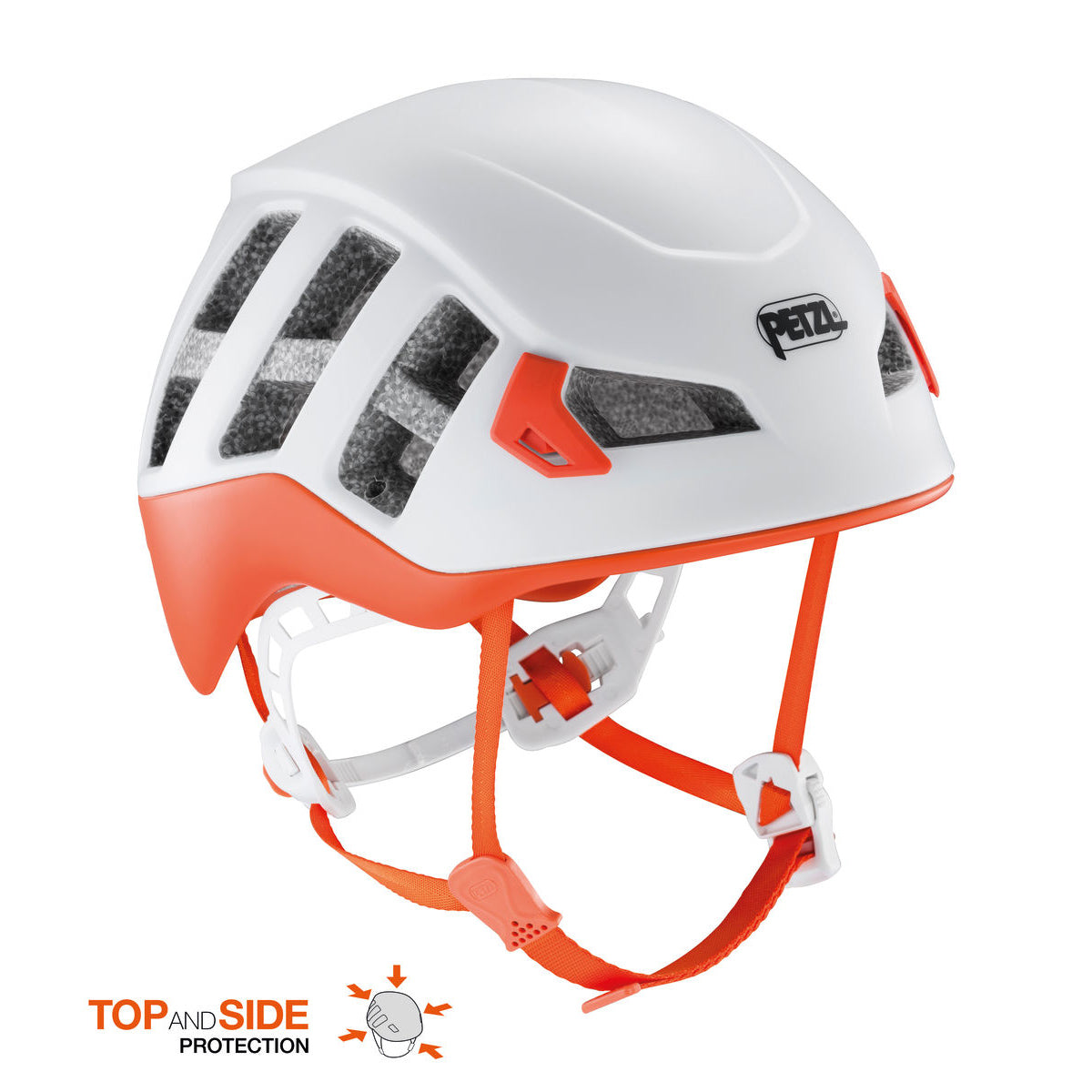
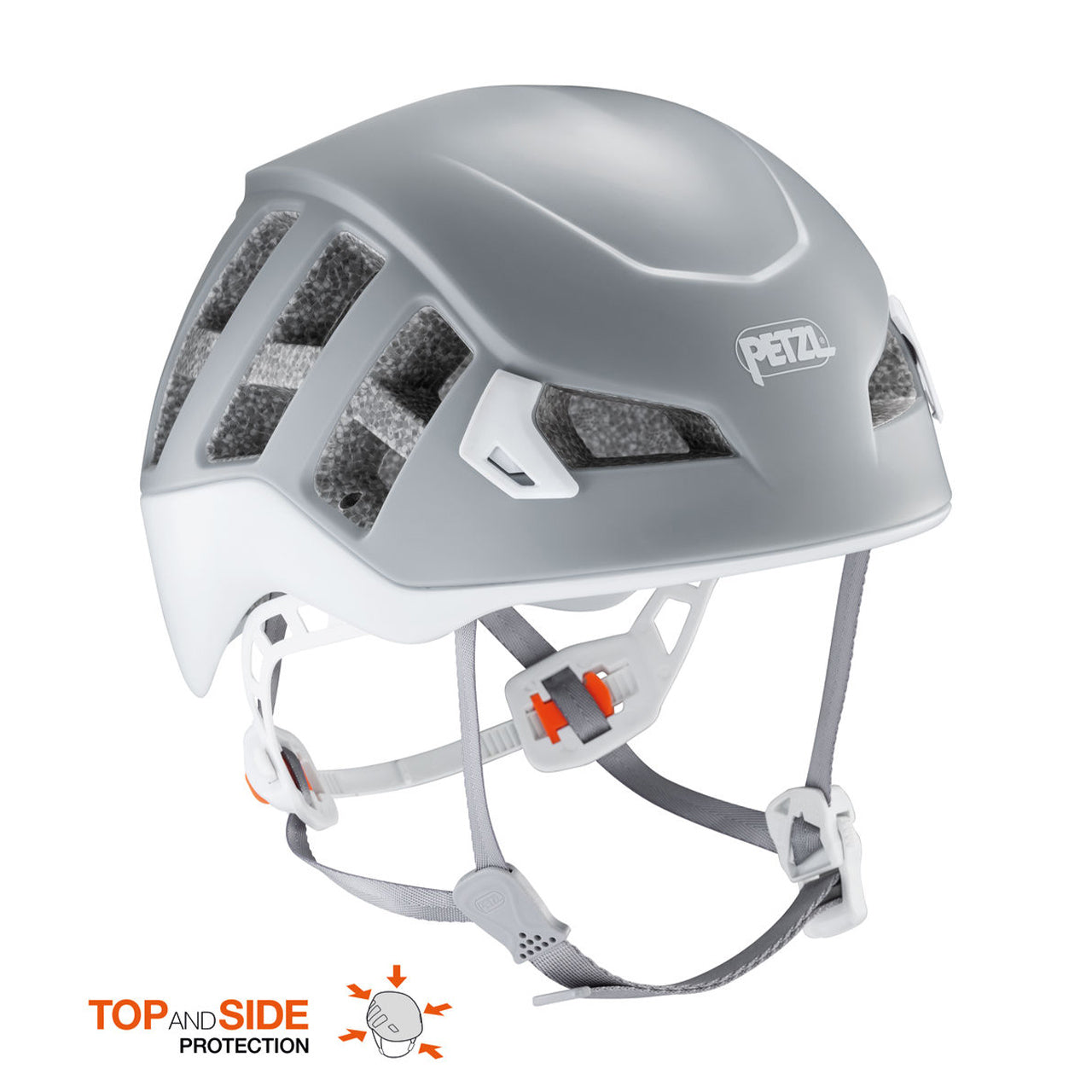
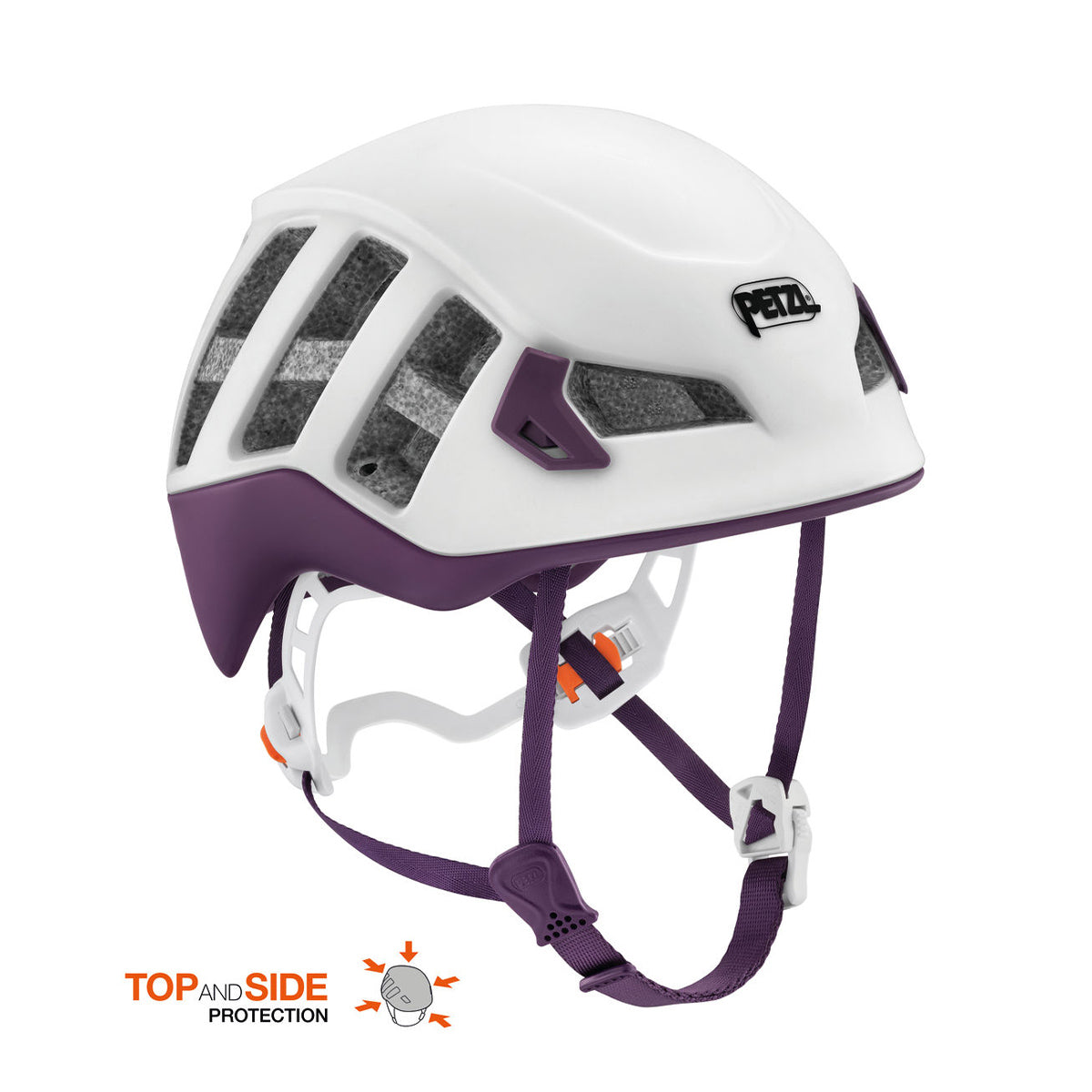
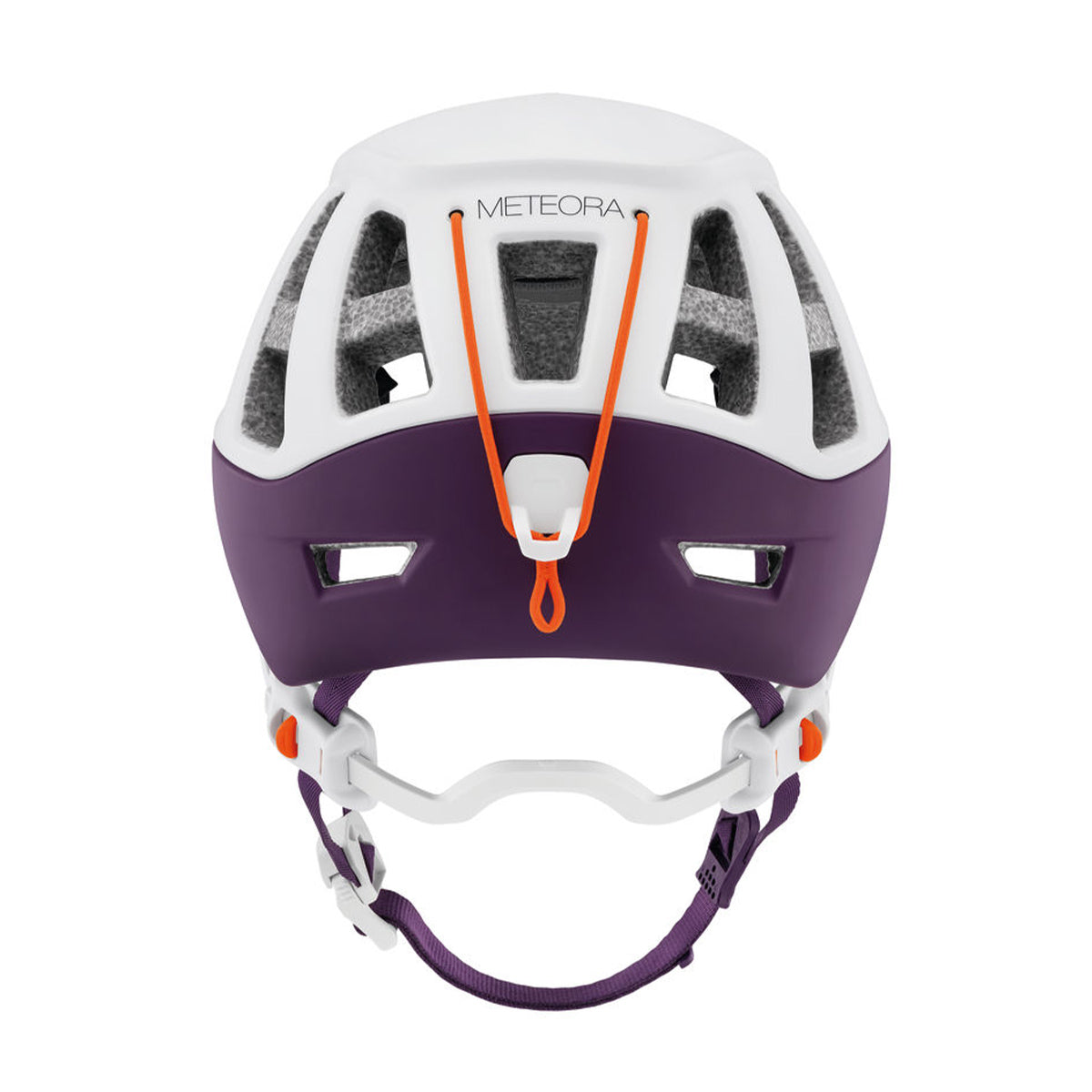
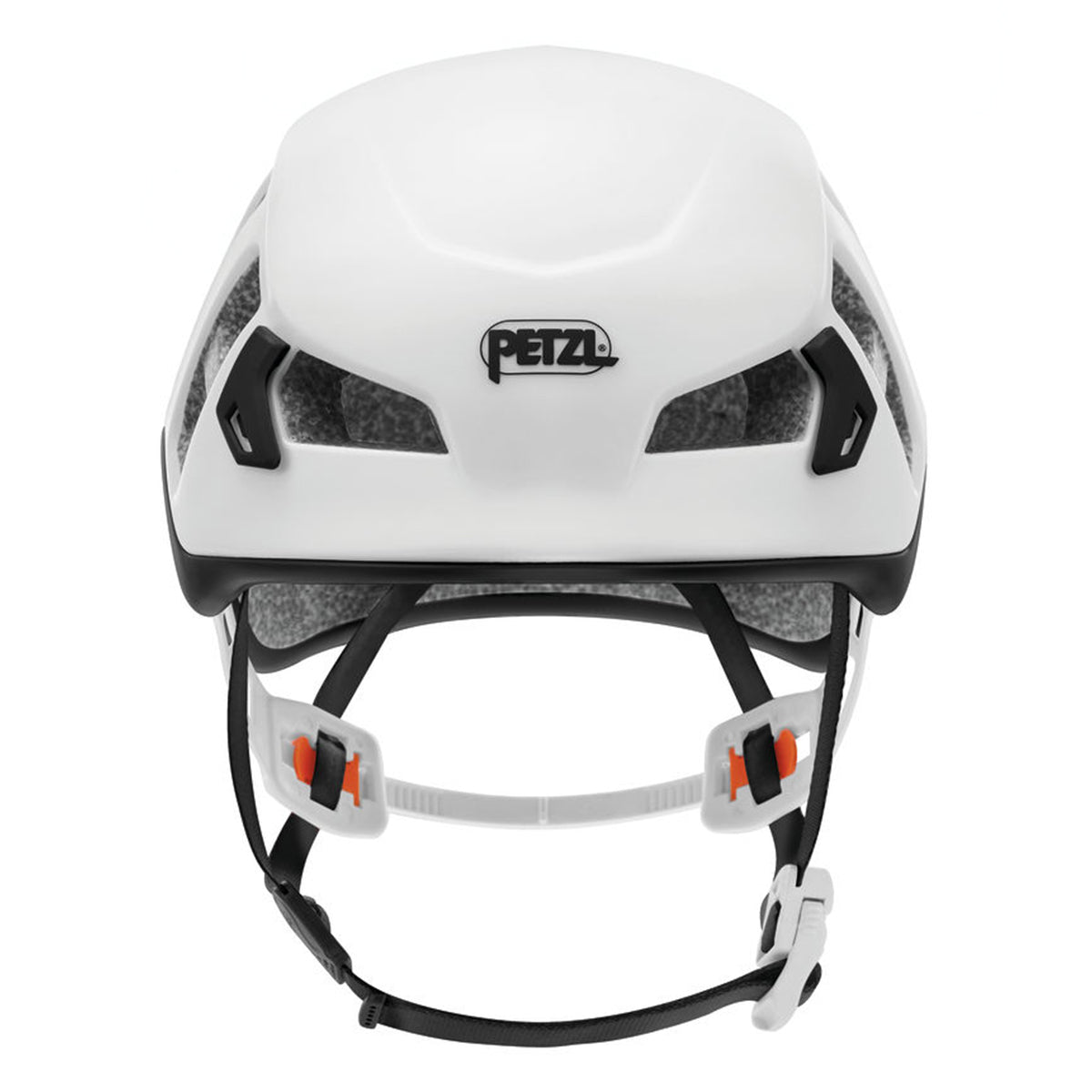


Meteor / Meteora
Tier benefits:
Tier benefits:
The Petzl Meteor is the lightest full plastic shell helmet we carry. While there are still lighter helmets available, we think this is the best middle ground between weight, durability, and cost. The Meteor features a magnetic buckle which allows easy closure with one hand. The magnet will also attract iron particles often present in sand. If you climb in the desert or other silty areas, the magnet can get caked in particles and prevent the helmet from closing. If this is you, the Meteor may not be your perfect helmet. For most people, we think that the light weight and durability this helmet provides far outweighs the slight annoyance of occasionally picking dust off of a buckle.
Pros
- Lightest weight full plastic shell helmet. Easily closeable with one hand.
Cons
- Magnetic buckle can attract iron dust.
Belay Devices
Always keep your hand on the brake strand when using any belay device. Assisted braking devices are not hands free, and rely on brake strand tension to engage. Here are three of our favorite belay devices for sport climbing.
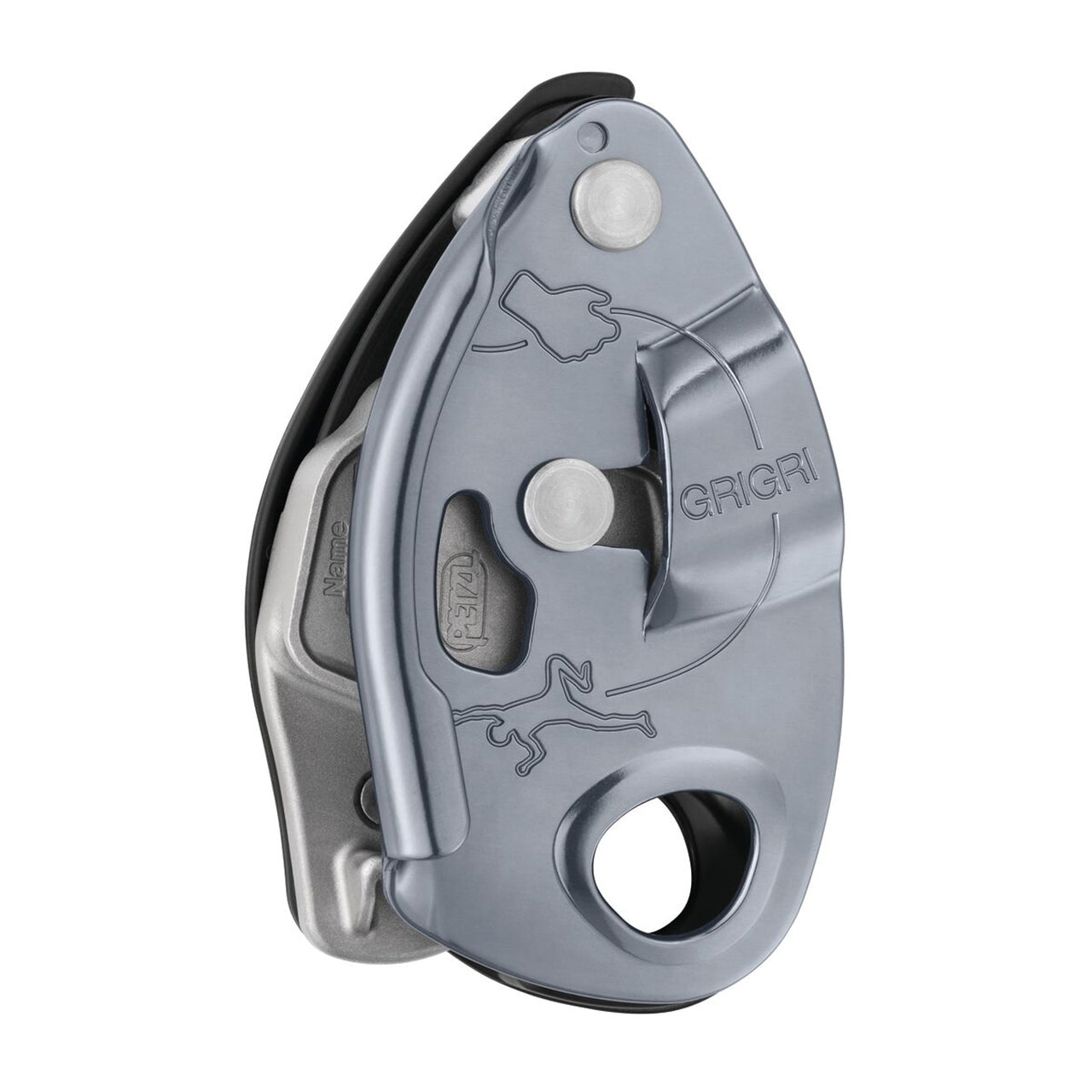
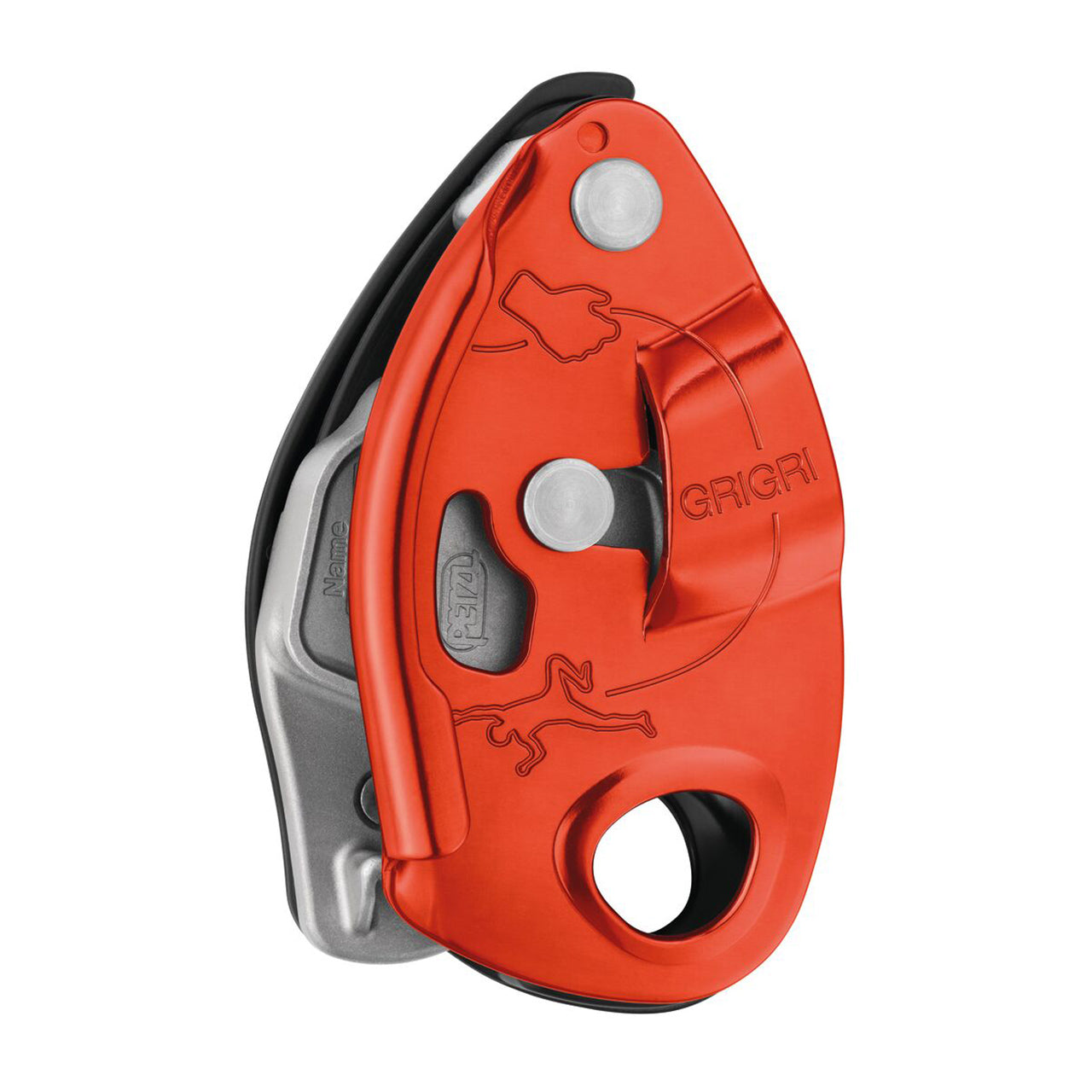
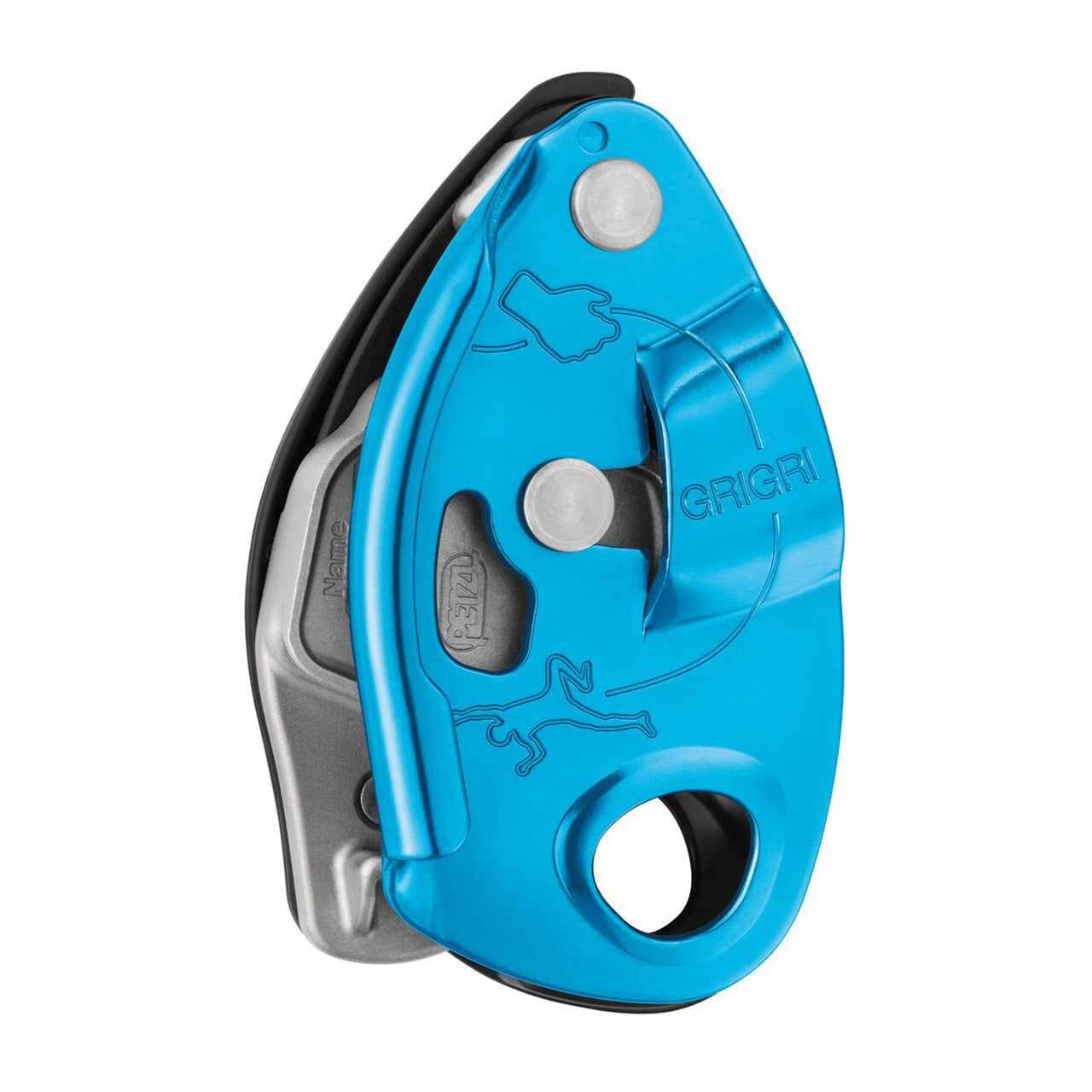
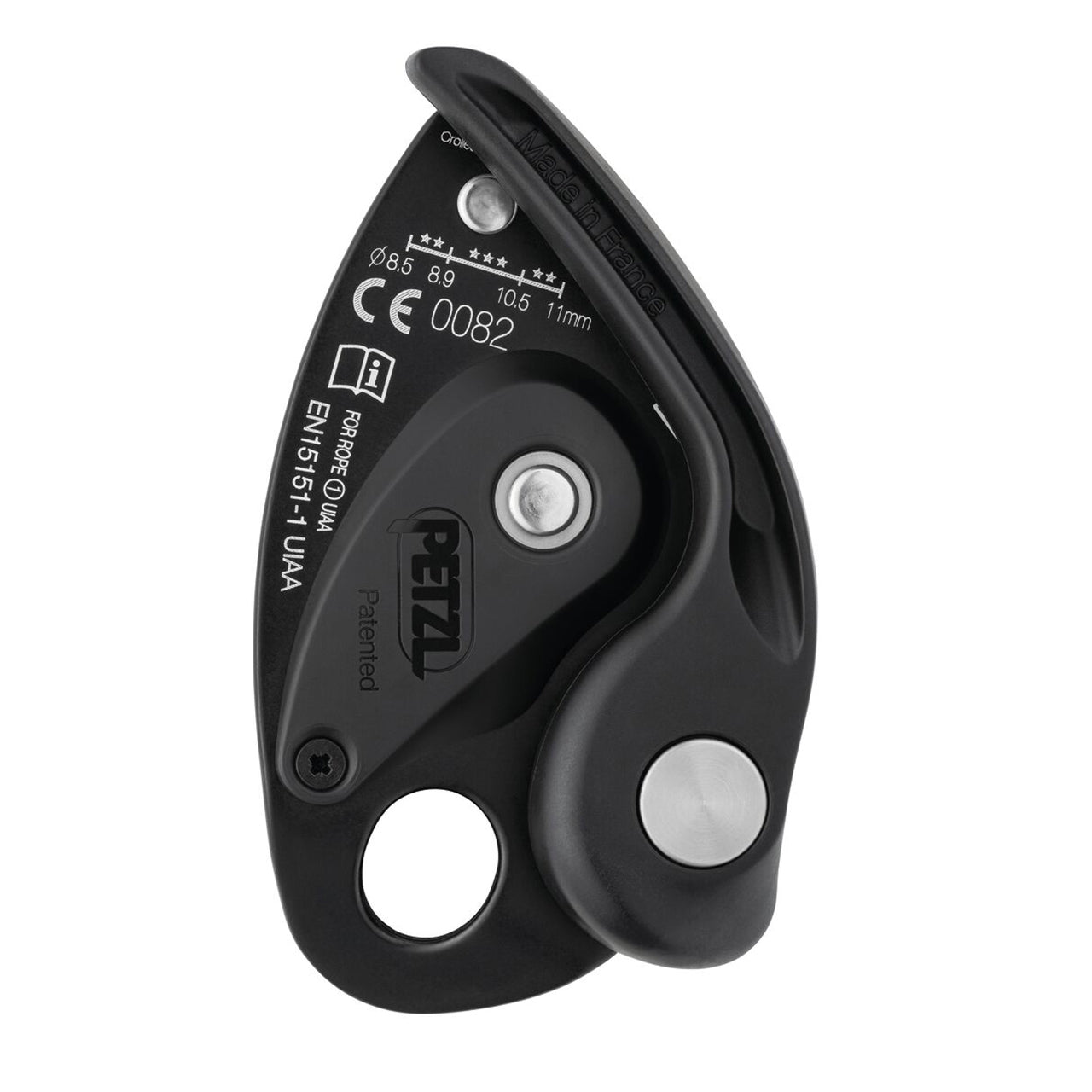

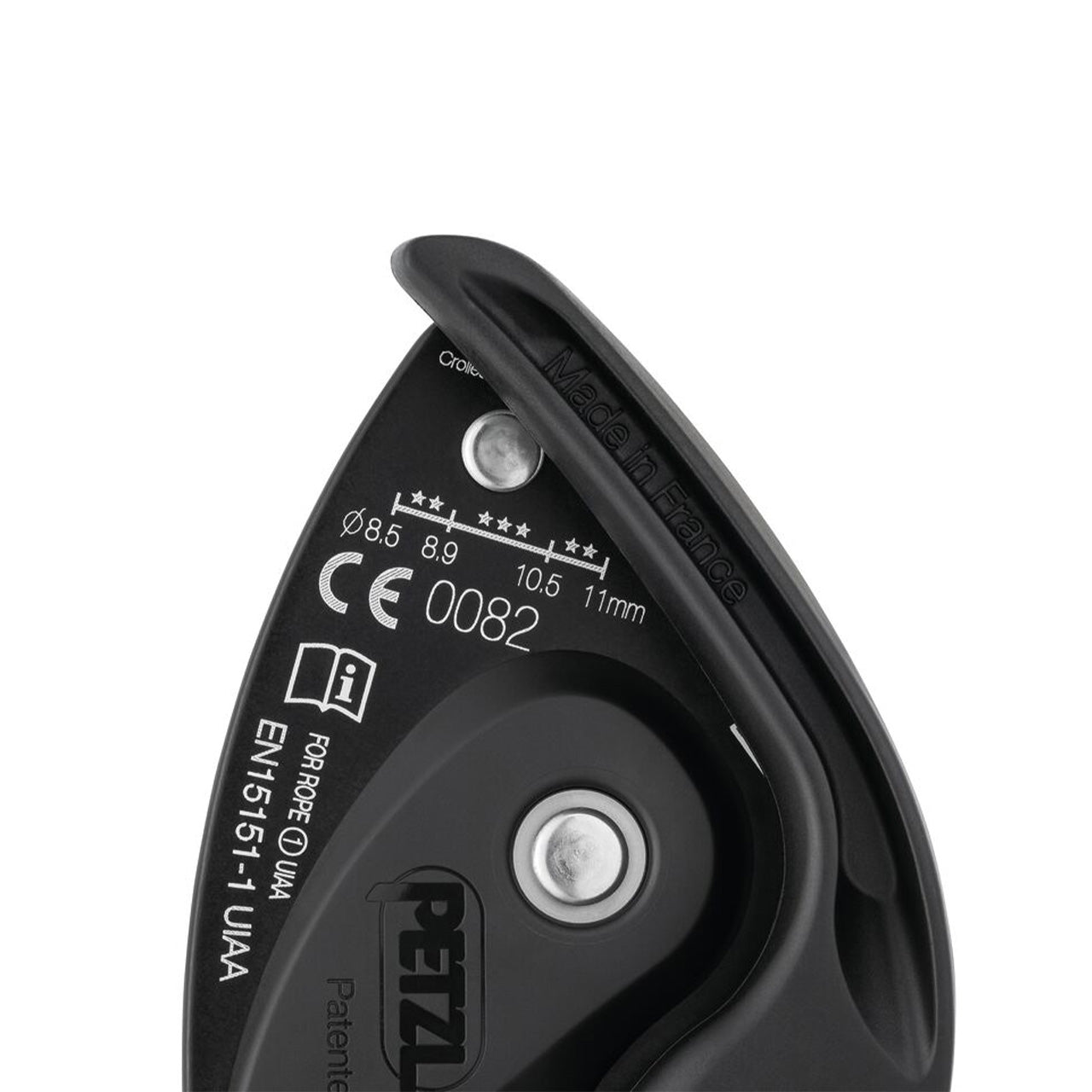

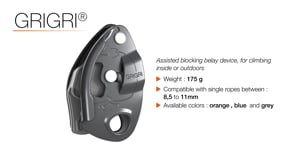
Grigri
Tier benefits:
Tier benefits:
The Petzl GriGri is one of the most popular and safest belay devices ever designed. It relies on a cam to pinch the rope and prevent it from moving when loaded. Because you don’t have to pull down constantly on the brake strand to hold someone in place (never take your hand off), this device is fantastic for projecting routes or giving a top rope belay. The GriGri’s cam engages very consistently, making it almost impossible to drop your climber. Giving a lead belay with a GriGri can take some getting used to, but we find it quite comfortable after the initial learning period. The only downsides of the GriGri are its high cost and weight.
Pros
- Reliable braking assistance.
- Comfortable for long belays.
Cons
- Single chamber.
- Expensive.
- Heavy.
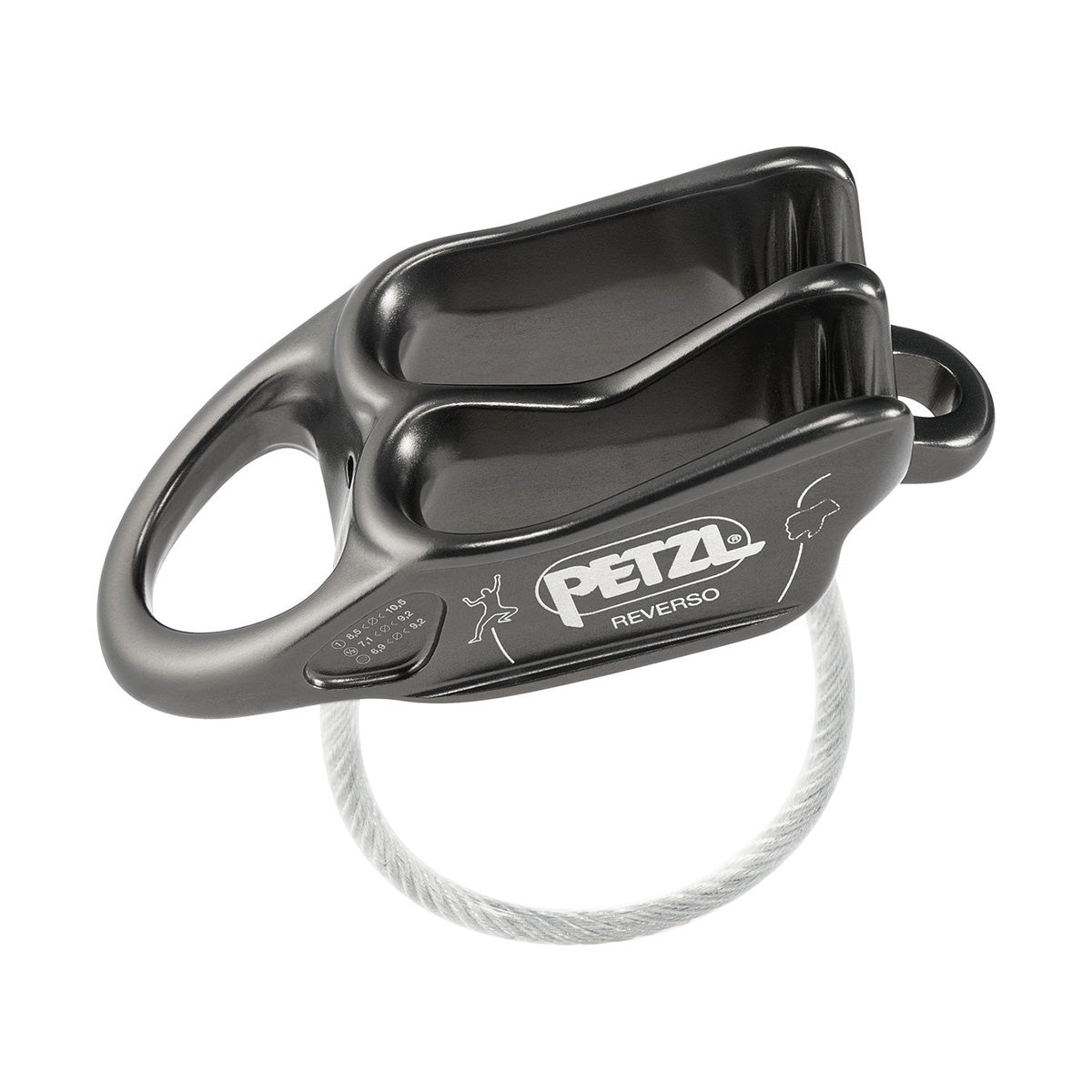
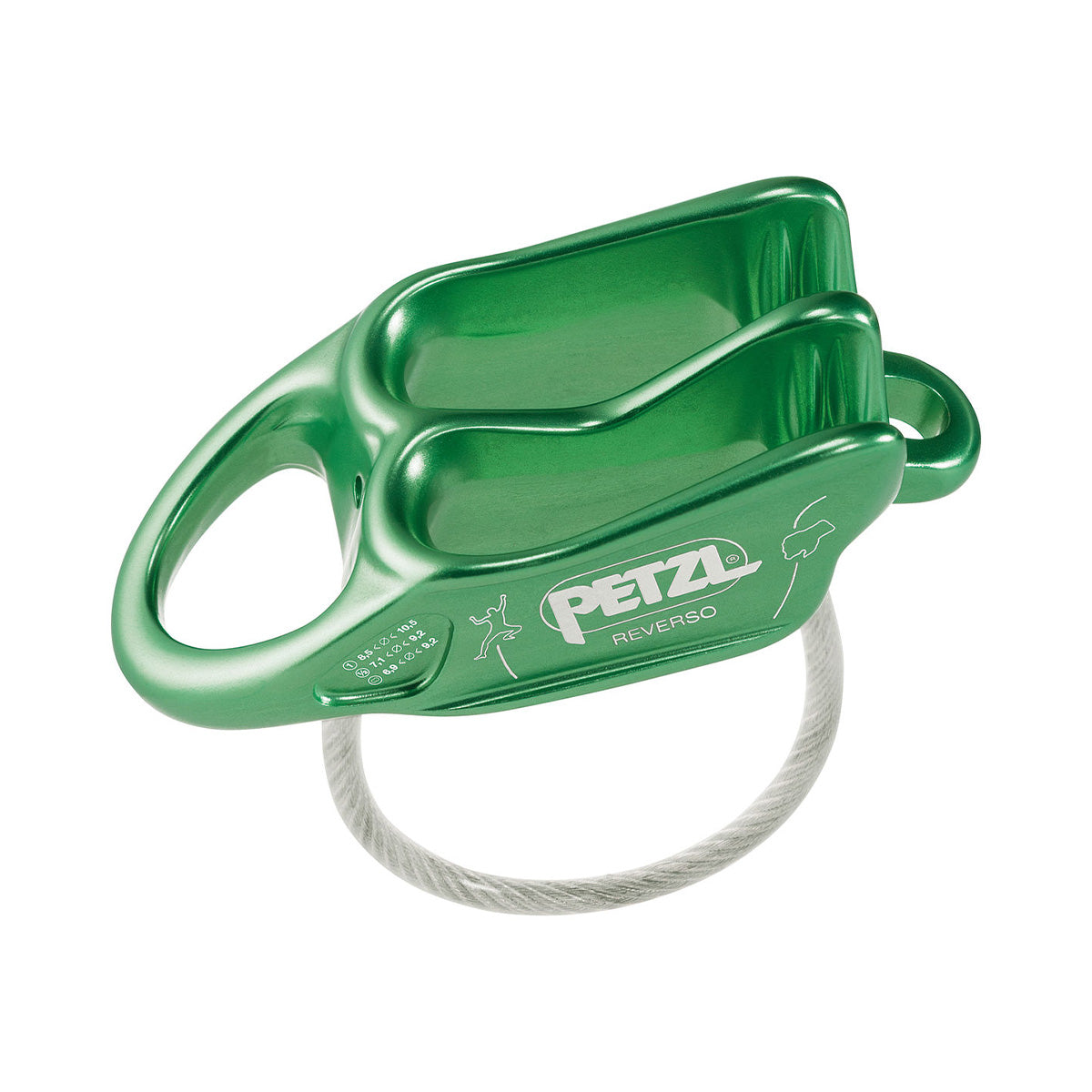
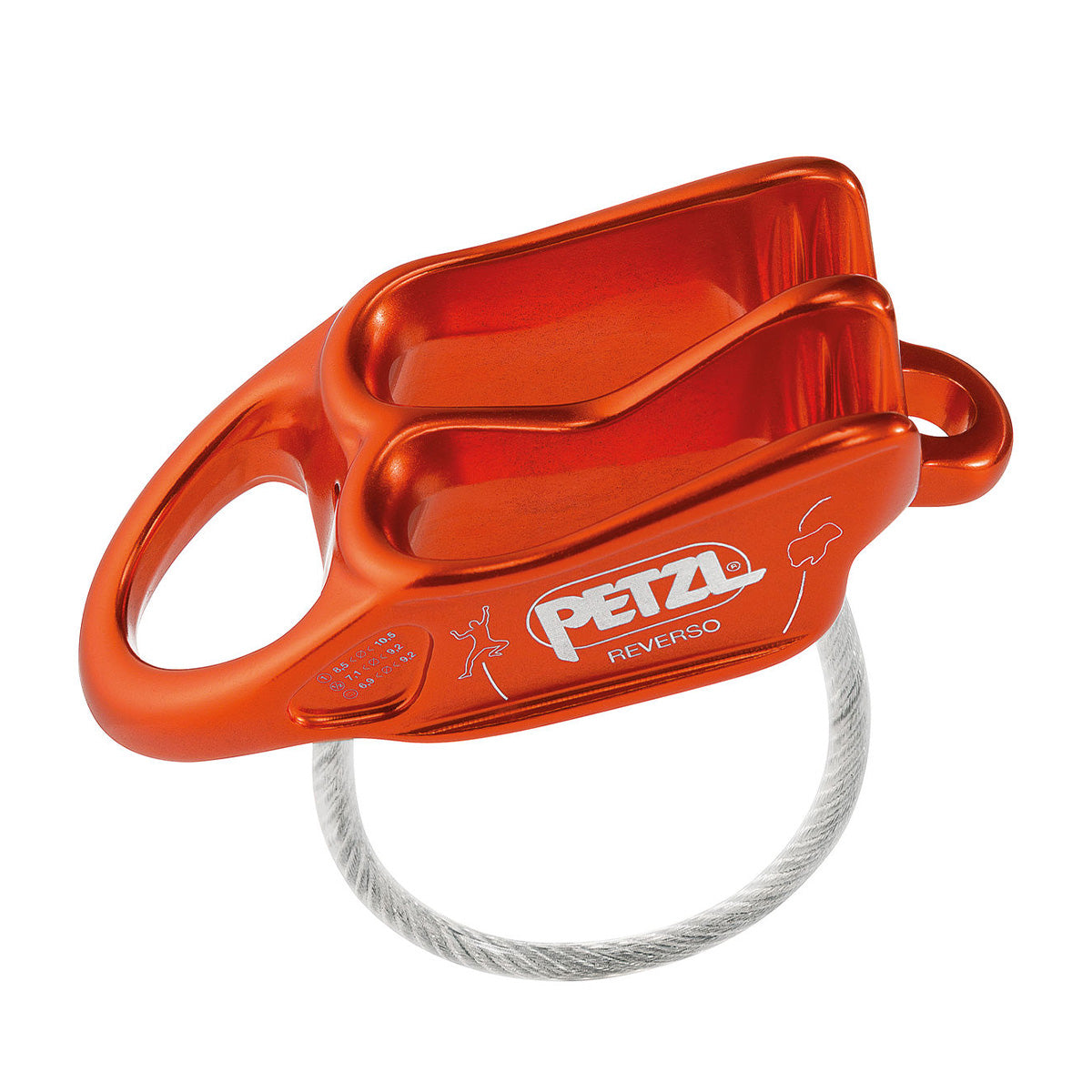
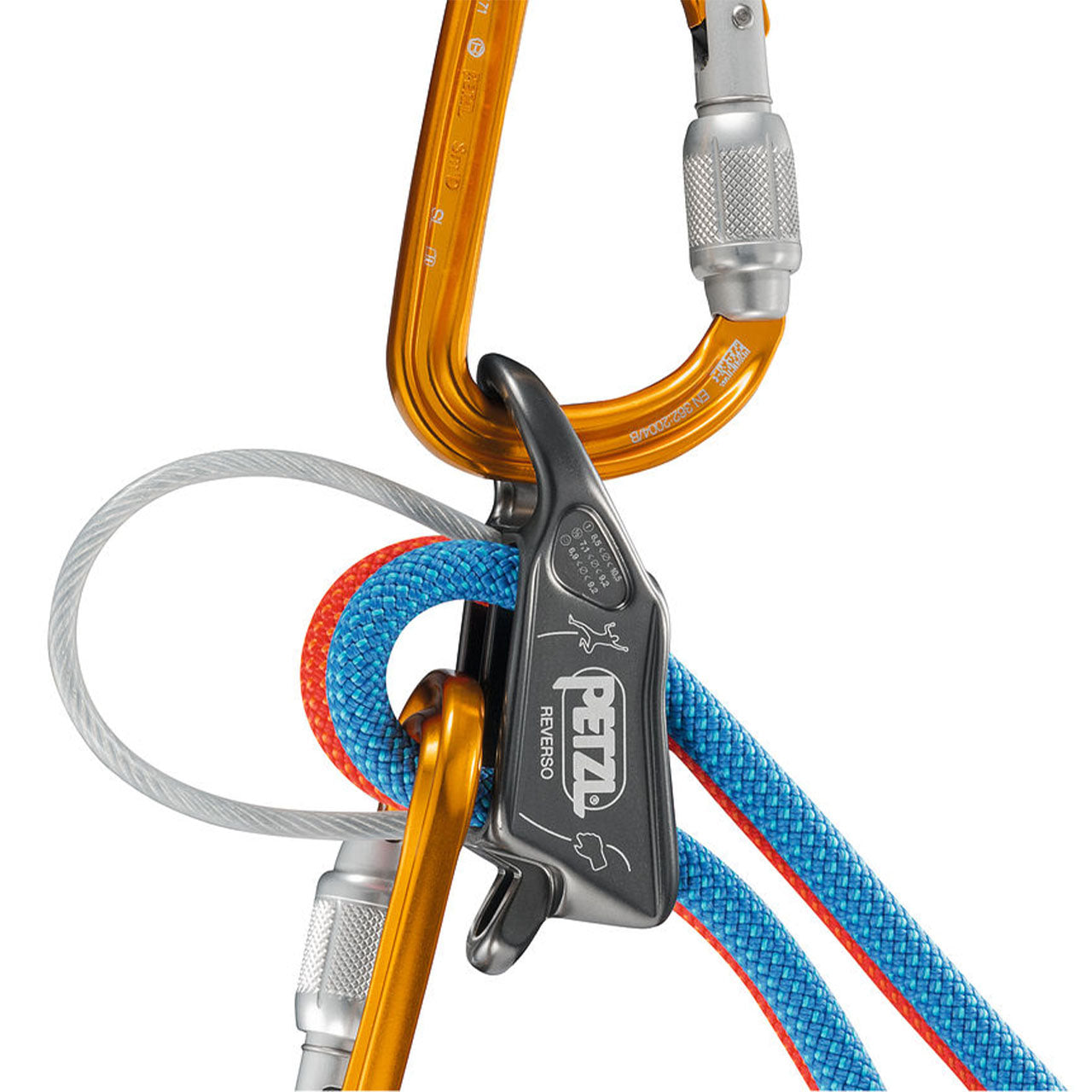
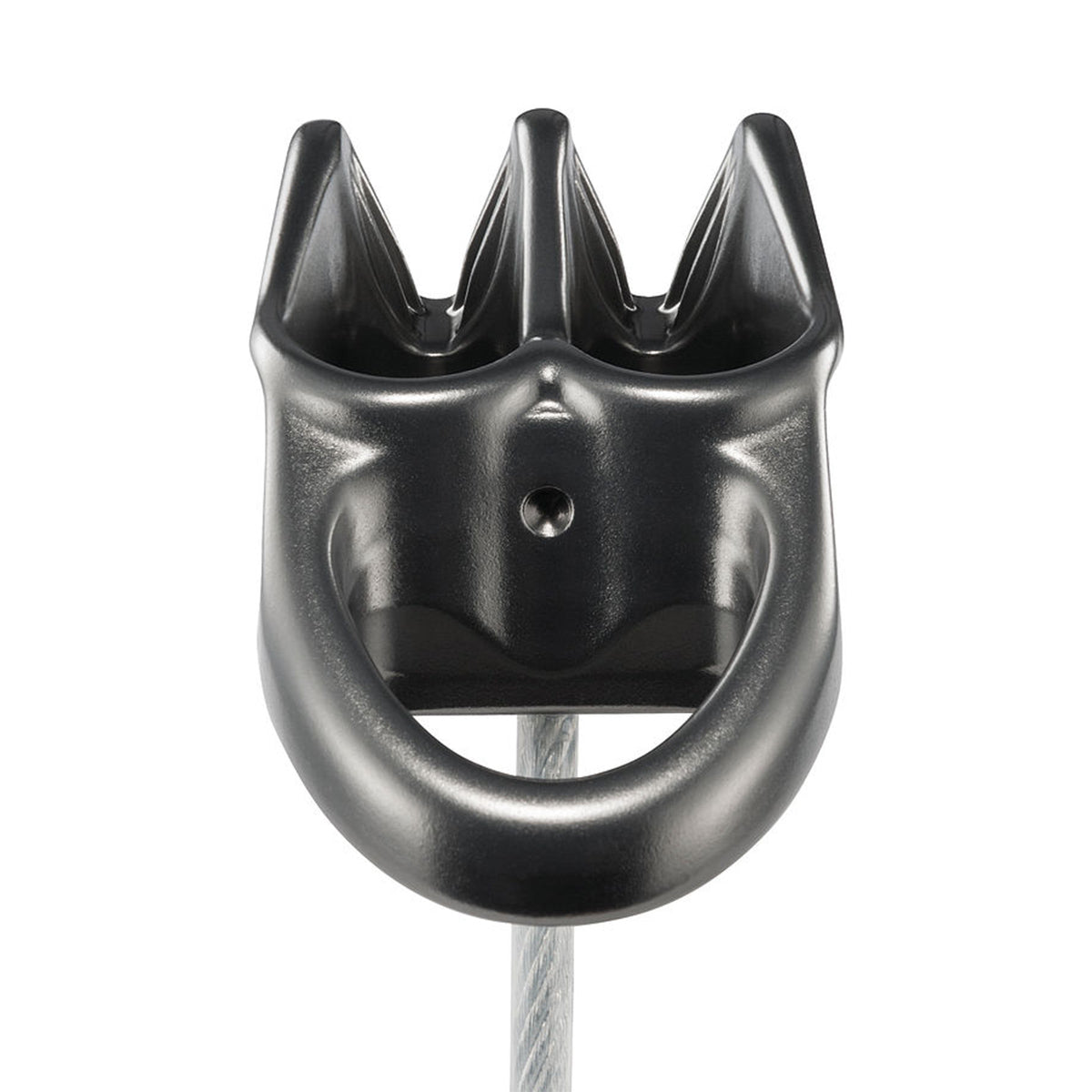
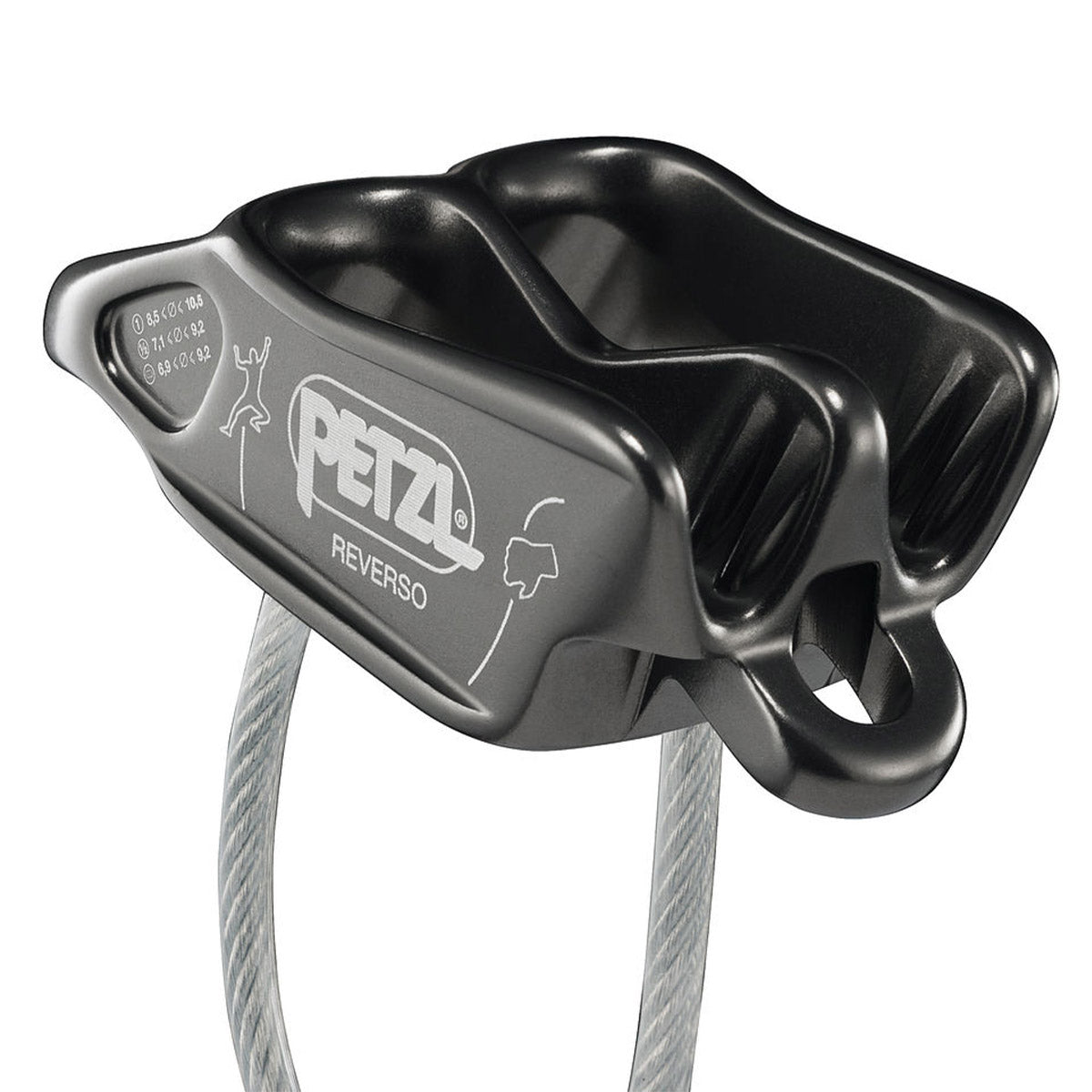
Reverso
Tier benefits:
Tier benefits:
The Petzl Reverso is our favorite tube-style, non-assisted braking device. It’s competitive cost, lightweight design, guide mode, and rappel comfort make it perfect for multi pitch and alpine ascents. While this device can be used for single pitch sport climbing, we recommend using a device with some amount of brake assistance for extra safety. If you are doing a multi pitch sport climb with a long approach, there is no device we’d rather use than a Reverso. This device might be less durable than other guide-style tubes due to its lightweight construction, but we have never noticed any issues.
Pros
- Lightweight.
- Guide mode.
- Dual chamber for rappels.
Cons
- No braking assist.
- Maybe less durable due to thin construction.
Personal Anchors
It is always best practice to carry a personal anchor in case you need to directly secure yourself to the wall. While one can use a sling or a loop of cord, we think using a dedicated personal anchor system is best for newer climbers. They make it easy to change the length of your personal anchor and allow for speedy rappel transitions.
![id=[50406353994043]](http://hownot2.com/cdn/shop/files/L034BA00-CONNECT-ADJUST_LowRes.webp?v=1764116179&width=2000)
![id=[50406353994043]](http://hownot2.com/cdn/shop/files/L034BA00-CONNECT-ADJUST-focus-3_LowRes.webp?v=1764116179&width=2000)
![id=[50406353994043]](http://hownot2.com/cdn/shop/files/L034BA00-CONNECT-ADJUST-focus-2_LowRes.webp?v=1764116179&width=2000)
![id=[50406354026811]](http://hownot2.com/cdn/shop/files/L035CA00-DUAL-CONNECT-ADJUST_LowRes.webp?v=1764116179&width=2000)
![id=[50406354026811]](http://hownot2.com/cdn/shop/files/L035CA00-DUAL-CONNECT-ADJUST-focus-2_LowRes.webp?v=1764116179&width=2000)
![id=[50406353994043]](http://hownot2.com/cdn/shop/files/L034BA00-CONNECT-ADJUST-focus-1_LowRes.webp?v=1764116179&width=2000)
![id=[50406354026811]](http://hownot2.com/cdn/shop/files/L035CA00-DUAL-CONNECT-ADJUST-focus-1_LowRes.webp?v=1754608509&width=2000)
![id=[50406354026811, 50406353994043]](http://hownot2.com/cdn/shop/files/L035CA00-DUAL-CONNECT-ADJUST-focus-3_LowRes.webp?v=1754608509&width=2000)
Connect Adjust
Tier benefits:
Tier benefits:
The Petzl Dual Connect Adjust lanyard is a great option if you are looking for a dedicated personal anchor. This device increases safety by allowing you to quickly and easily adjust the length of the lanyard. This makes the likelihood of shock loading an anchor very low, since there is almost never any slack in your personal anchor. While this adjustability is great, the device is bulkier than other personal anchors and lacks some of the versatility they provide as well. We like the Dual Connect Adjust better than the Single and Vario versions, as it provides the best balance between features and ease of use.
Pros
- Easily adjustable
Cons
- Bulky
- Hard to make redundant
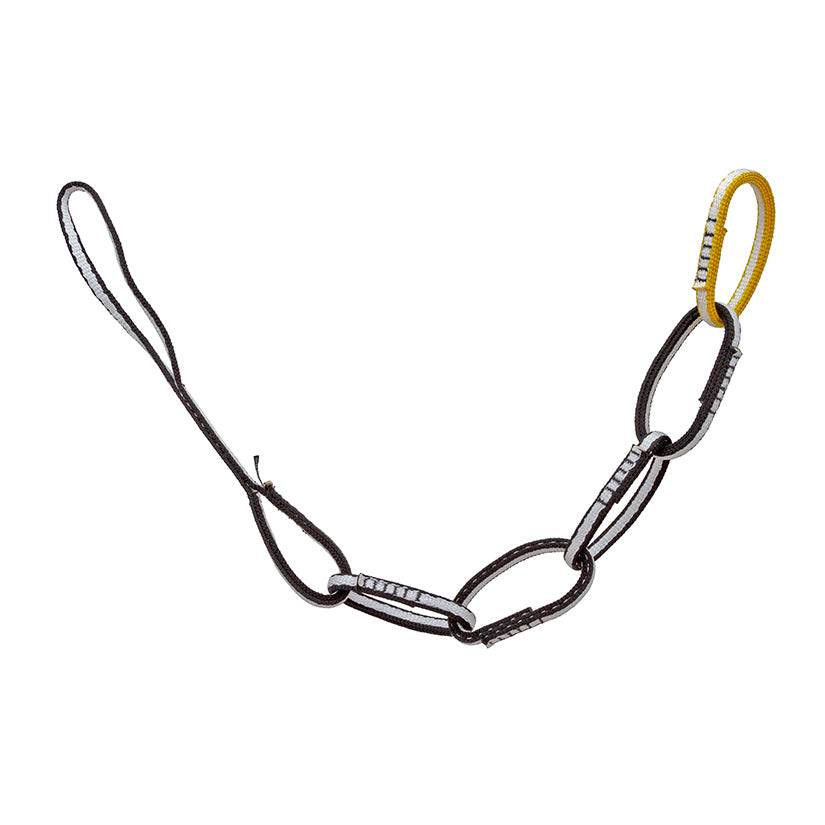
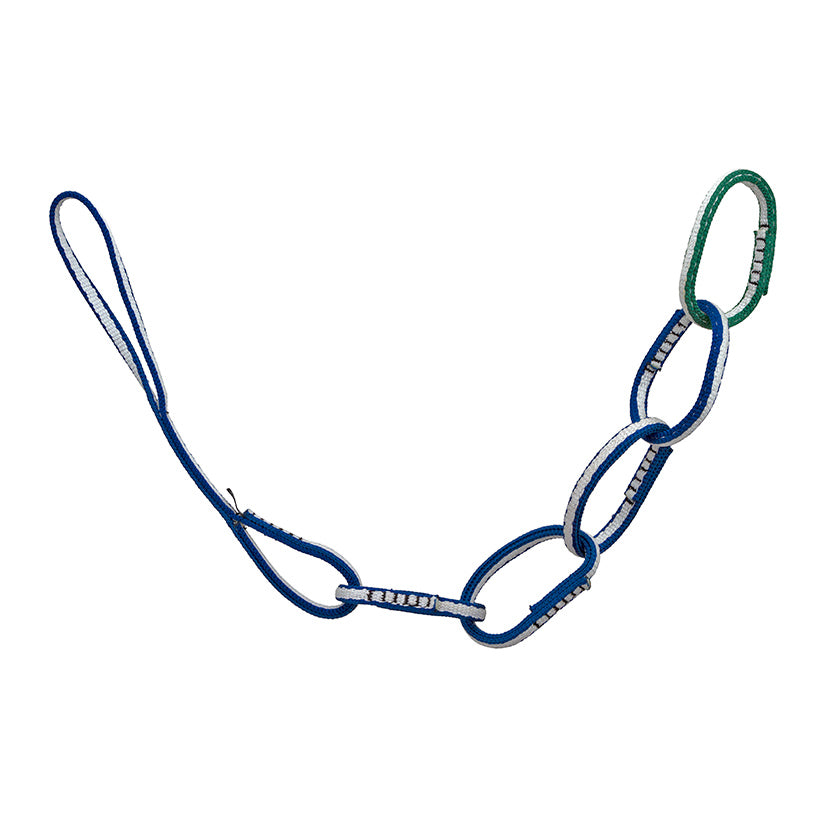

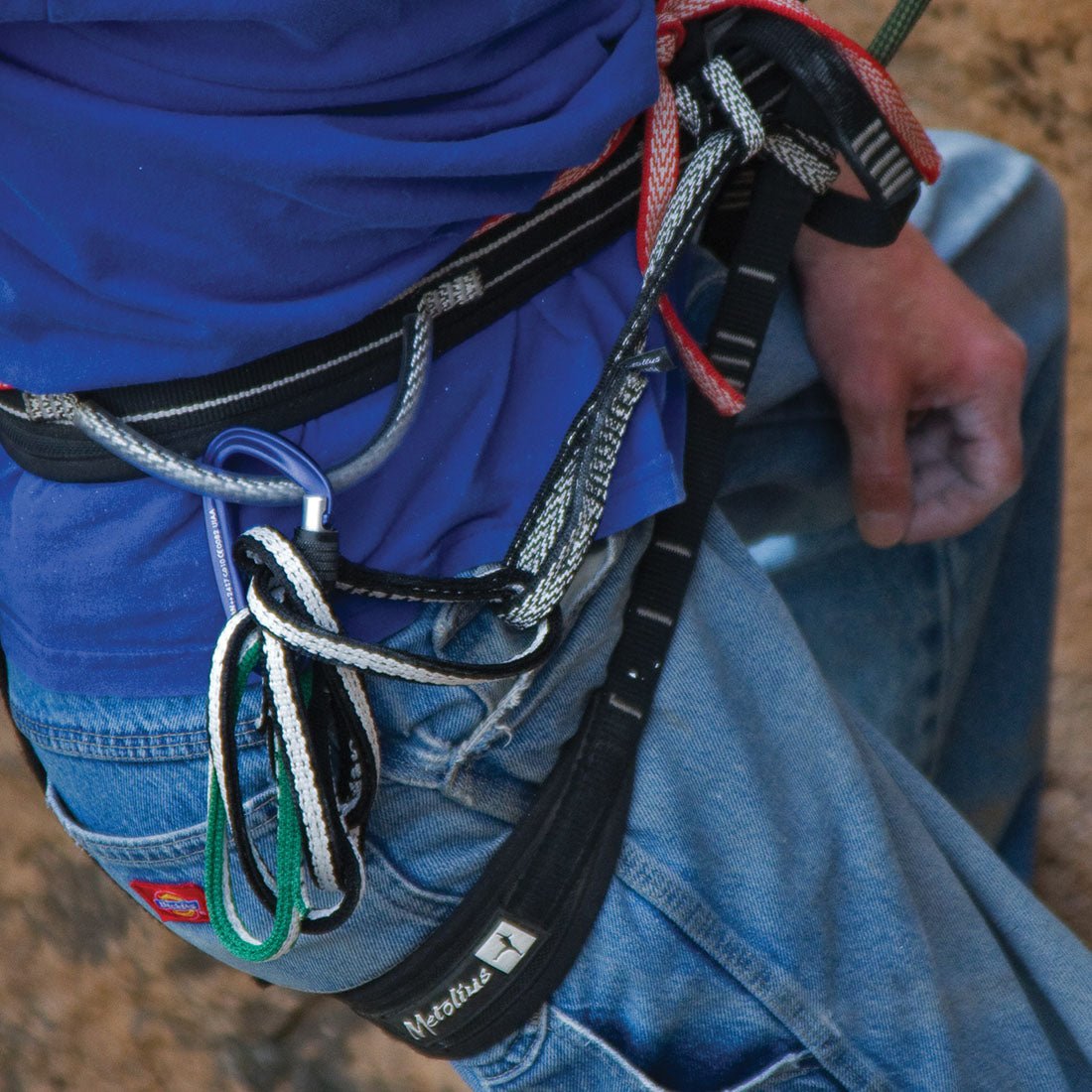
PAS 22
Tier benefits:
Tier benefits:
The Metolius PAS 22 is probably the most frequently used dedicated personal anchor. This lanyard features many sewn Dyneema loops, allowing you to change the length by clipping to different loops. This adds security by allowing you to back up your lanyard with an extra locker or spare quickdraw. This also allows quick rappel transitions by letting you set up your rappel even when the lanyard is fully weighted. If you plan on doing multi pitch sport routes, we think this style of personal anchor is a little better suited to this style. The biggest drawback of the PAS 22 is that it is very static. Falling any distance onto this anchor can generate very high forces, potentially injuring you or breaking your anchor. Be extra careful to eliminate slack while using this lanyard.
Pros
- Many attachment points
- Great for rappelling
Cons
- Very static
- Distinct adjustment points
Anchor Material
![id=[47744041615675]](http://hownot2.com/cdn/shop/files/hb2zegap1y.01632-o-sling-DYN-8-orange.jpg?v=1754608182&width=1260)
![id=[47744041648443]](http://hownot2.com/cdn/shop/files/xg0a8xep6f.01628-o-sling-DYN-8-blue.jpg?v=1754608182&width=1260)
![id=[47744049971515, 47744050004283]](http://hownot2.com/cdn/shop/files/yupdfa2wz2.01630-O-sling-DYN-8-red.jpg?v=1754608182&width=1260)
![id=[49475609297211]](http://hownot2.com/cdn/shop/files/Ocun-bio-dyn-8mm-30cm-red.webp?v=1754608182&width=2000)
![id=[50047291294011]](http://hownot2.com/cdn/shop/files/qa80ssbt2s.01632-o-sling-dyn-8-green.jpg?v=1754608183&width=1280)
8mm Bio - Dyneema O-Sling
Tier benefits:
Tier benefits:
While it is generally safe to top rope on a few quickdraws, we recommend using a dedicated top rope anchor because of the added security. Our preferred sport climbing anchor is the quad anchor. Since it self equalizes, you can tie it on the ground and clip it to the anchor bolts without having to fuss with knots while off the ground. We like using a quad-length (240cm) sewn sling for this. Nylon slings like the BD Nylon Runner are durable and inexpensive, but are a lot bulkier on your harness. You can also use 16-18 feet of 7mm cord to tie this style of anchor if you’d rather save some money.
Any small D-shaped locker will work great for connecting your anchors to the bolts. Thanks to their cheap price point, we think the Cypher Firefly II locking carabiners are great for this. These lockers are exactly what you want from a D-Shaped locker, and nothing more.
Using a carabiner with a slightly larger basket on the rope side can give less friction through the anchor, but we really don't think this matters enough to spend extra money on bigger HMS carabiners. One great option for the rope side carabiners are the Edelrid Bulletproof series. They feature a stainless steel insert in the basket of the carabiner, making your rope side lockers last much longer than typical aluminum carabiners. We like the D-shaped screwgate since they are a little cheaper, but if you want to spend more and have a low friction anchor, you can use the HMS variety as well. You will need two of these so you can have opposite and opposed redundancy.
Pros
- No knots
Cons
- Higher price than cord
Rappel Backup
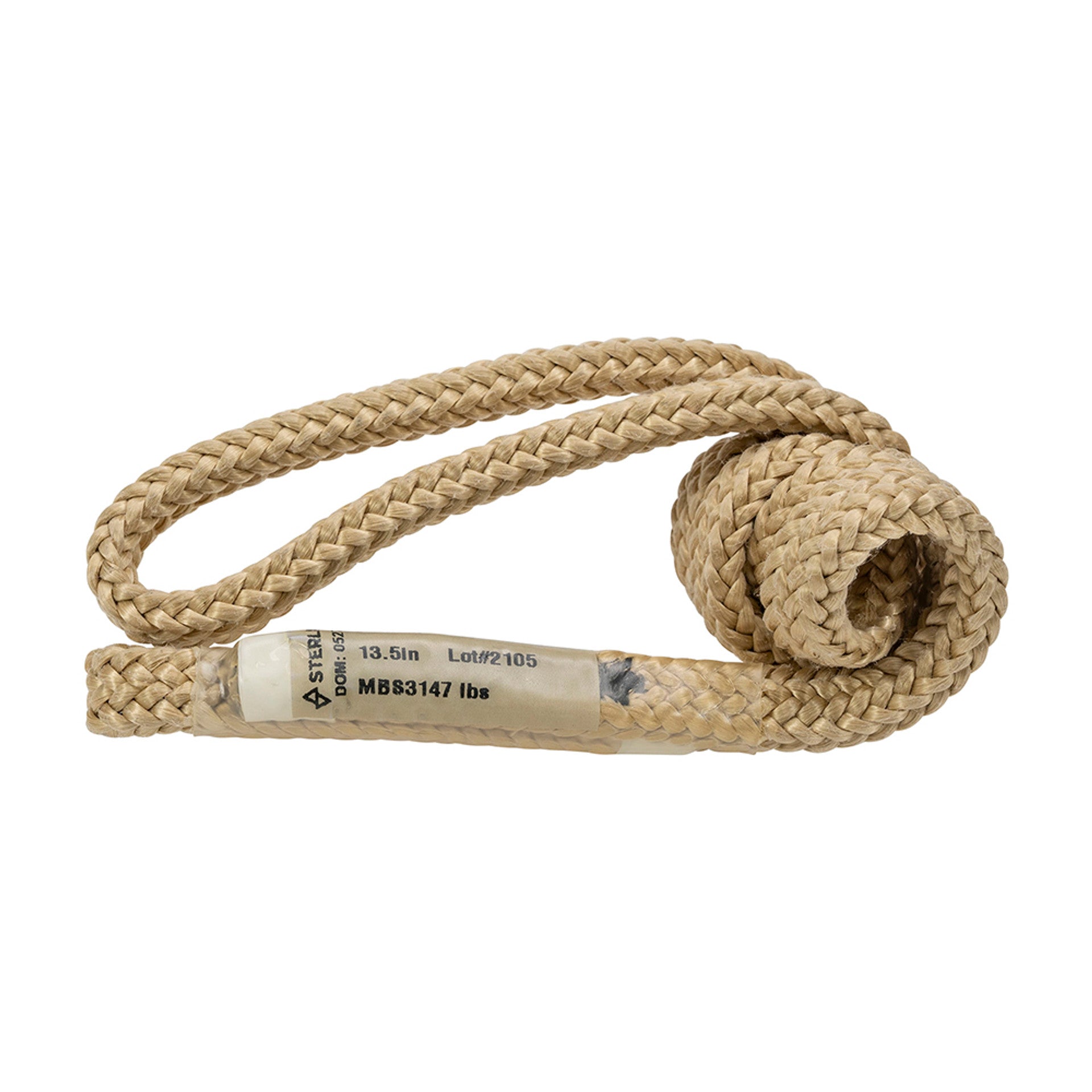
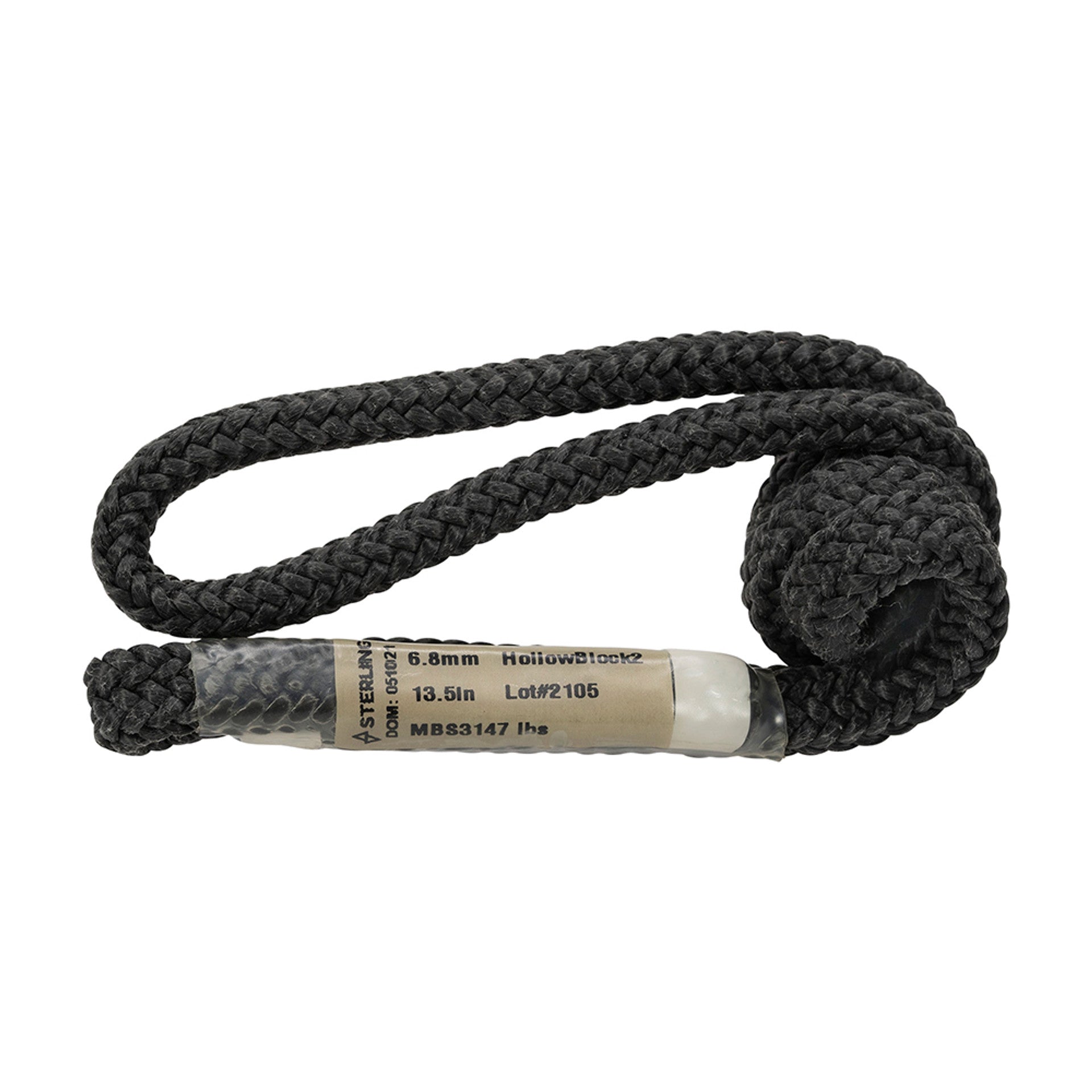

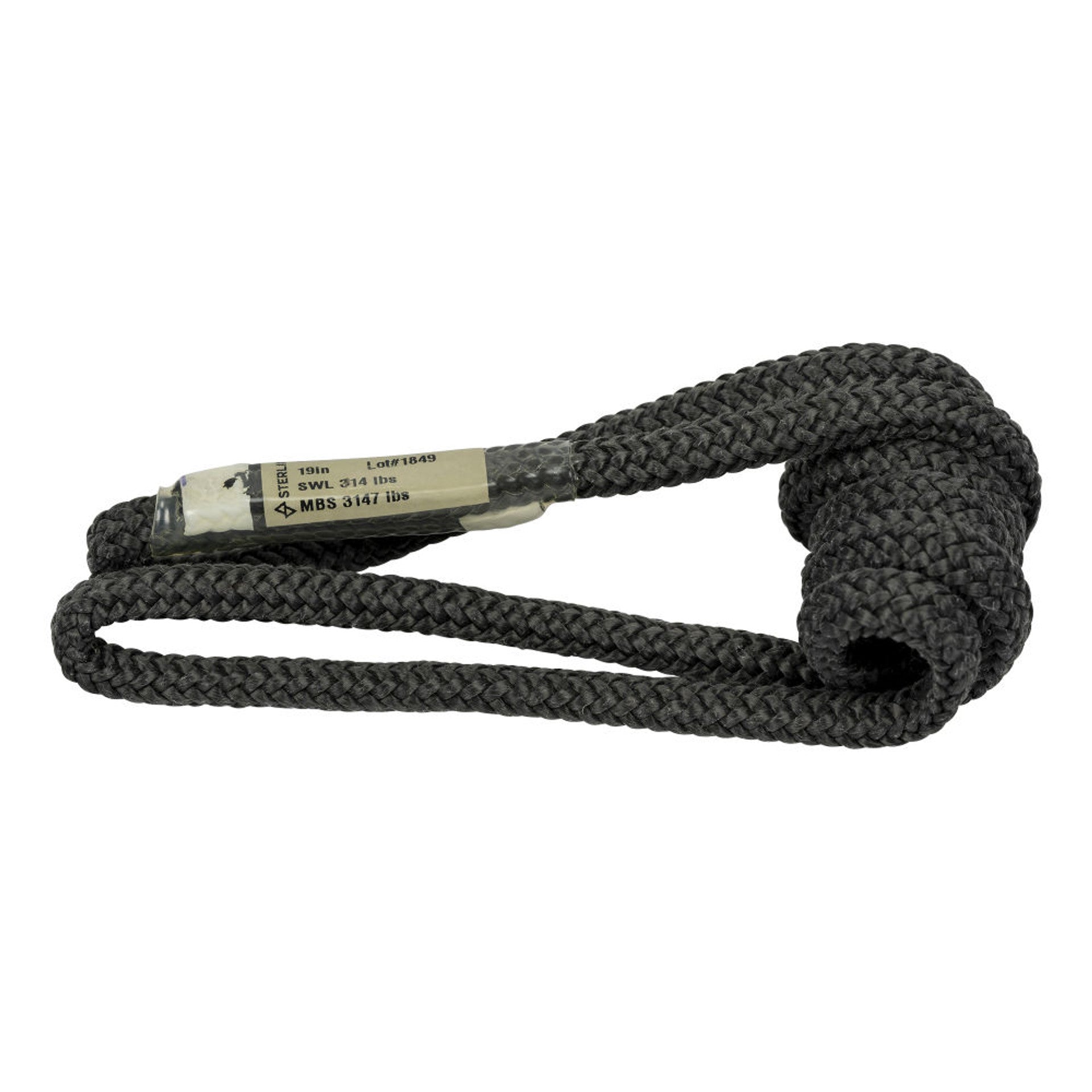
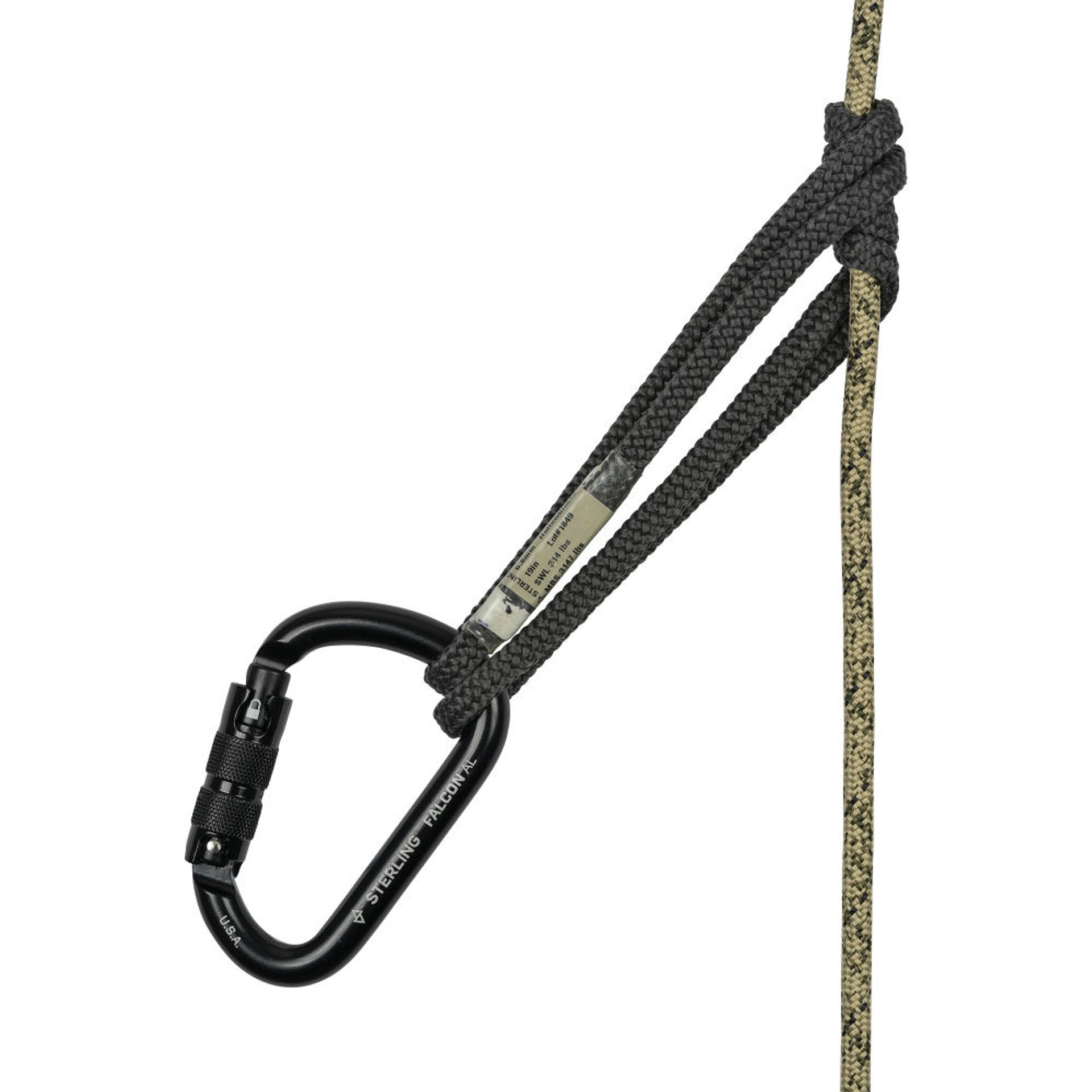
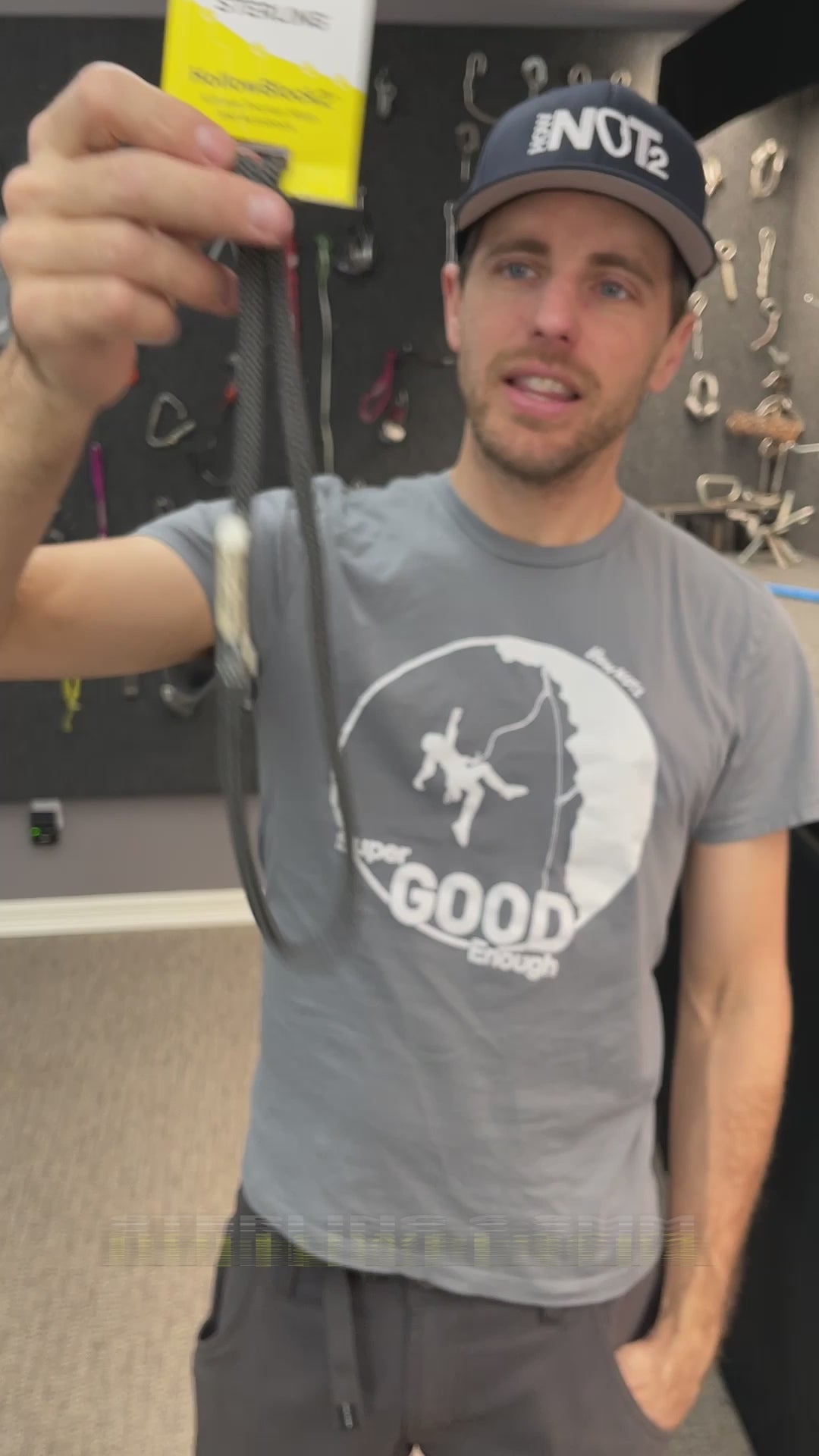
6.8mm HollowBlock2
Tier benefits:
Tier benefits:
When rappelling, it is safest to backup your rappel with an auto-blocking friction hitch. To do this you will need one locking carabiner and a 4 foot loop to tie the hitch with. We like using a sewn prusik, like a Sterling Hollowblock. The Hollowblock eliminates knots and works better for skinny ropes than normal accessory cord. Another option is using 5 mm or 6 mm cord, depending on the diameter of your rope. Cord is cheaper, but has bulky knots and might wear out faster. We think either option is great, and you should choose the one that fits in your budget the best.
Pros
- Works for wide variety of rope diameters
Cons
- Higher price point
Shoes
Starter Shoes
If you are just getting started climbing, our recommendation is to stick with a shoe that is relatively flat and relatively cheap. There really aren't many meaningful differences within this category of shoes. Each shoe will have a slightly different shape, which will make some work well for your foot and others work poorly. We recommend trying on as many as you can before making a decision.
When making a decision about a particular shoe, make sure that you explore many size options as well. An ideally fit climbing shoe hugs your foot with little to no extra space inside. This means that your toes will be sitting against the front of the shoe. Climbing shoes tend to push the foot forward, so you will likely find space on top and behind of your foot rather than in front. If you try on a shoe and have this space, try a little smaller. Once you have eliminated all the space from inside a shoe, then you can make a decision about whether it's the right one for you. There are enough options in the cheap, flat category that you can normally find one that is both fully filled and super comfortable enough.
Climbing shoes run very differently brand to brand. Evolv, Black Diamond, Butora, and Five Ten shoes all run very close to street size. Scarpa, La Sportiva, and Tenaya all run significantly larger. It is not uncommon to wear a street sized Five Ten shoe and a 2 EU downsized La Sportiva shoe, they really just run that much bigger. This is why it is important to try many sizes and work your way towards having little to no space inside the shoe.
Different shoe materials break in differently. Many entry level shoes are made of primarily unlined suede leather. Suede stretches a lot, so being on the side of discomfort in a shoe like this out of the box is totally okay. Other shoes are made of synthetic materials that don’t break in nearly as much. These shoes will get more comfortable and soften over time, however the overall shape and volume stay very much the same. It is okay to be a bit more conservative when sizing a synthetic shoe.
La Sportiva Tarantulace
- Cheap
- Fits a wide variety of foot shapes well
Scarpa Origin
- Velcro closure is very simple.
Evolv Defy
- Wide heel shape
La Sportiva Finale
- Great for a narrower, high arched foot
Scarpa Helix
- Great for a narrower, lower arch foot
Evolv kira/kronos
- Slightly softer than other options, may perform better on big smeary feet common in the gym
